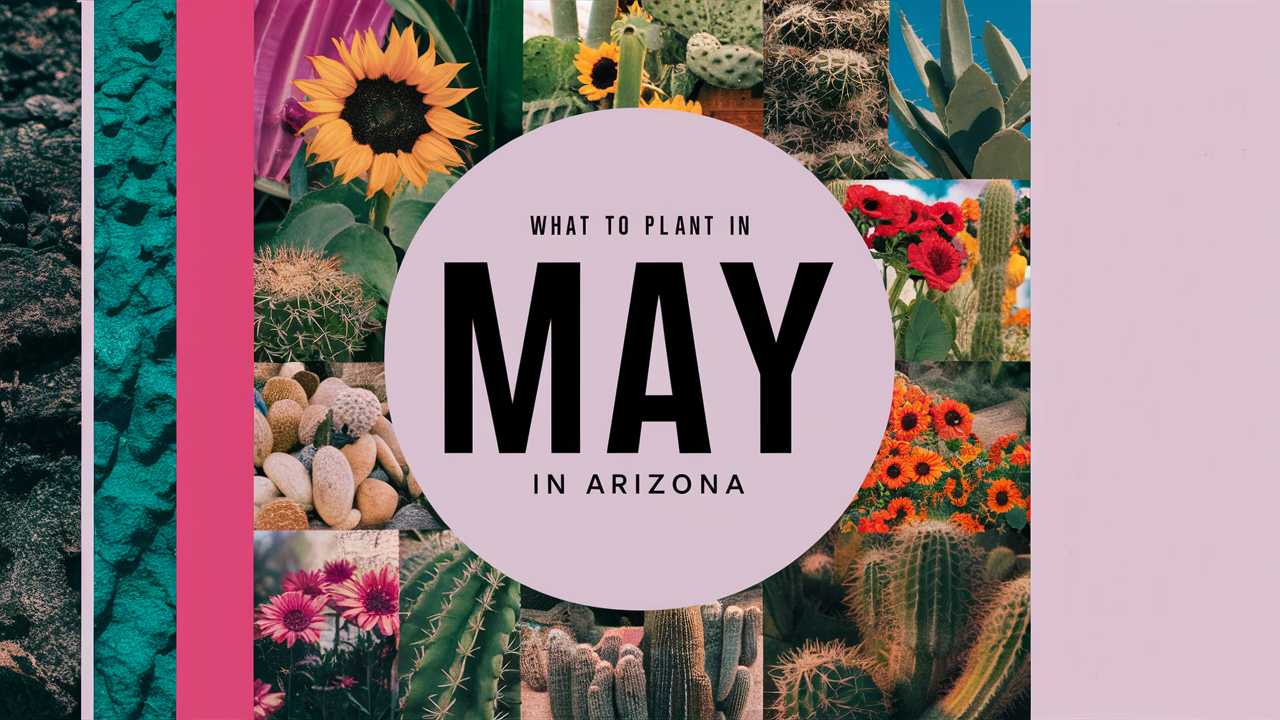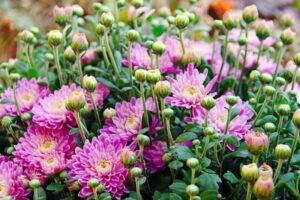This detailed guide will explore what to plant in May in Arizona, offering special insight into care and best practices to ensure a fruitful growing season.
Vegetables To Plant
Tomatoes
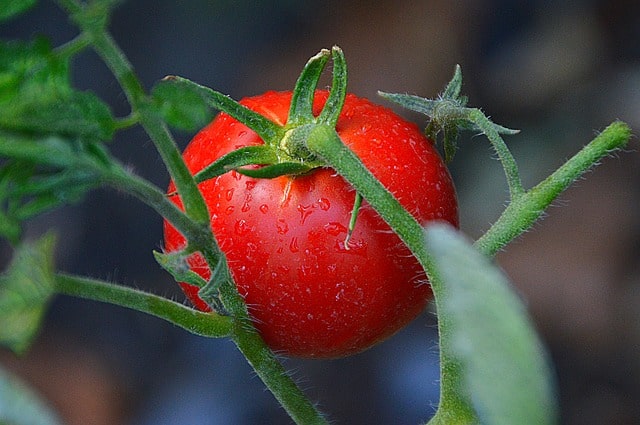
Tomatoes are a favorite among gardeners and thrive in the warmth of May.
Planting Tips and Varieties: For Arizona’s heat, select varieties like ‘Heatmaster’, ‘Solar Fire’, or ‘Sun Gold’, known for their heat tolerance. Plant seedlings or transplants when nighttime temperatures consistently stay above 55°F. Space your plants about 18-24 inches apart to allow adequate airflow and prevent diseases like blight.
Care Considerations: Tomatoes require at least 6-8 hours of sunlight daily. Incorporating a balanced fertilizer before planting will support initial growth. Regular watering is essential—aim for deep watering once a week rather than shallow watering multiple times. Mulching, using straw or wood chips, can help retain moisture and keep soil temperatures stable. Watch for blossom drop, which can occur if daytime temperatures exceed 95°F, indicating that irrigation might be necessary as heat stress increases.
Peppers

Peppers, both sweet and spicy, thrive in the warm May climate.
Planting Tips and Varieties: May is an excellent time to plant sweet varieties like bell peppers and hot varieties such as jalapeños and serranos. Use transplants or start seeds indoors, then transplant after the last frost. Ensure they are spaced 12-18 inches apart in fertile, well-draining soil.
Care Considerations: Peppers prefer a soil pH of 6.0 to 6.8 and require consistent moisture, particularly during flowering. Regular feeding with a balanced fertilizer will encourage healthy fruits, and mulch can help retain moisture around the root zone. Be on the lookout for aphids and spider mites, and consider organic insecticidal soap if infestations occur.
Squash
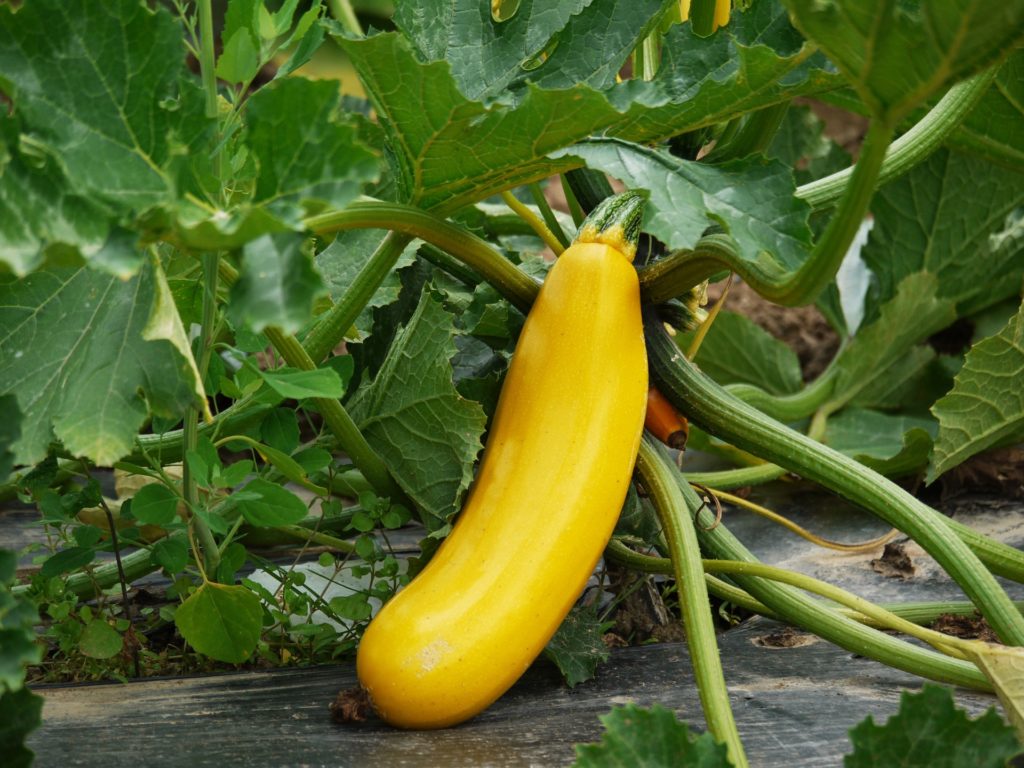
Summer squash varieties, including zucchini and yellow squash, are easy to grow and quite rewarding.
Planting Tips and Varieties: Plant seeds directly in the ground, spacing them 18 inches apart after the soil temperature reaches 70°F. You can also use transplants if starting early indoors.
Care Considerations: Ensure the plants receive a full sun. Regular watering is vital, especially during dry spells. Squash likes a deep soak (several inches) at least once a week. Watch for pests like squash bugs and aphids; manual removal and row covers can help minimize these issues. Applying a layer of organic mulch can suppress weeds and retain soil moisture, providing a more favorable growing condition.
Cucumbers
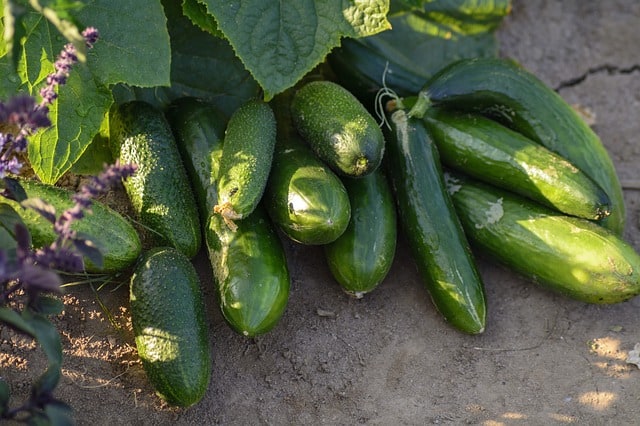
Cucumbers flourish in Arizona, making them a fantastic crop for May planting.
Planting Tips and Varieties: Start with either seeds or transplants, planting them directly in the ground when soil temperatures reach around 70°F. Space cucumber plants 12-36 inches apart, depending on the variety.
Care Considerations: Cucumbers require a lot of sunlight and warmth, but they also need consistent moisture. Regular watering is crucial, especially during fruit development. Utilizing a trellis can help save space and improve air circulation, reducing the risk of mildew. Applying mulch can also help keep moisture in, but avoid wetting the foliage during watering to prevent disease.
Basil
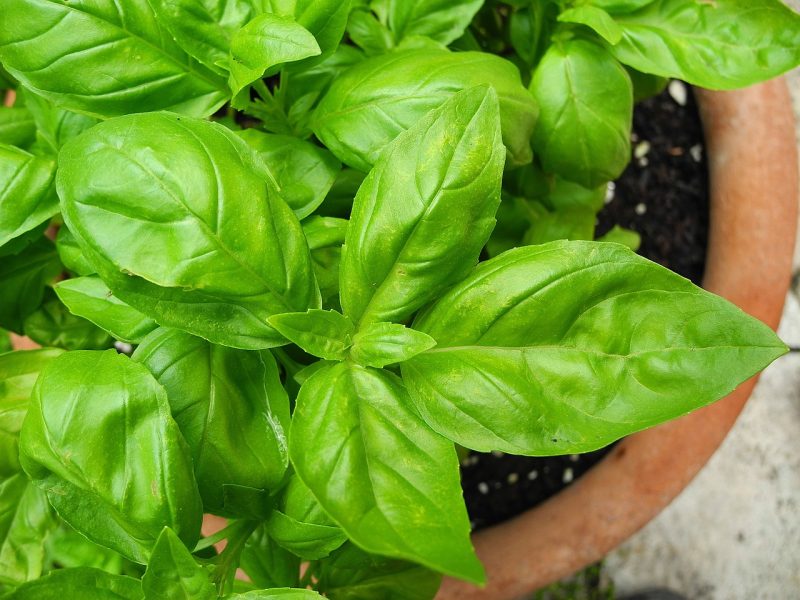
Basil is another essential herb that flourishes during the warm season.
Planting Tips and Varieties: Basil prefers a warm environment, so sow seeds in well-drained, nutrient-rich soil where it receives at least six hours of sunlight a day. Plant varieties like ‘Genovese’ or ‘Thai basil’ for diverse culinary uses.
Care Considerations: Keep the soil consistently moist during the growth phase but avoid overwatering to prevent root rot. Regular harvesting (pinching off leaves) will encourage bushier growth. Fertilizers should be low in nitrogen but rich in phosphorous and potassium to enhance flavor. Consider companion planting with tomatoes to improve growth and pest resistance.
Beans
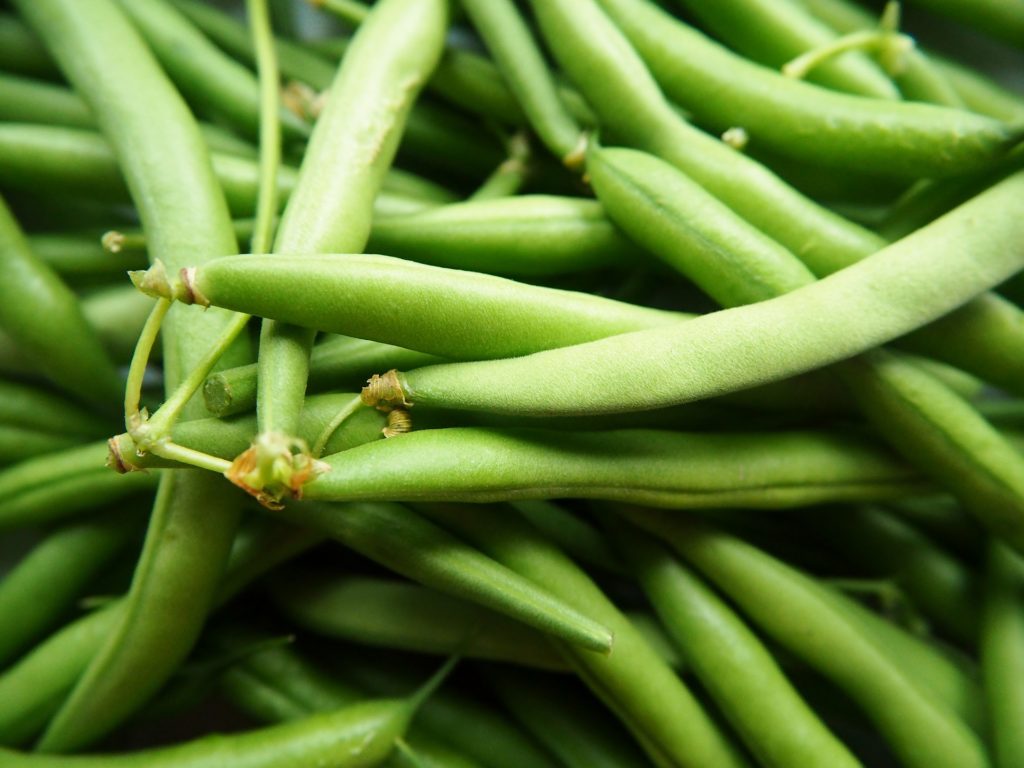
Beans, including bush and pole varieties, are straightforward and nutritious options for May planting.
Planting Tips and Varieties: Directly sow seeds into the soil when temperatures range from 60°F to 90°F. Space seeds about 2-4 inches apart, depending on whether you’re planting bush or pole varieties.
Care Considerations: Beans naturally fix nitrogen in the soil, enriching it for future crops. They thrive in full sun and well-draining soil, but consistent moisture is crucial for germination. Provide support for pole beans via trellises early on, and water regularly to maintain moisture without waterlogging. Look out for aphids on tender seedlings and consider using insecticidal soap if necessary.
Eggplants
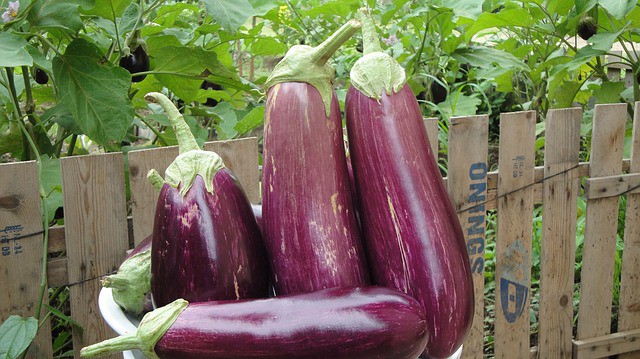
Eggplants enjoy the warm summer months in Arizona and can be reliably planted in May.
Planting Tips and Varieties: Choose varieties such as ‘Black Beauty’ or ‘White Egg’, and transplant seedlings when nighttime temperatures rise above 50°F. Space seedlings 18-24 inches apart in a sunny location in fertile soil.
Care Considerations: Eggplants require consistent soil moisture and thrive with regular watering. They benefit from deep watering sessions, and inserting stakes as they grow can help support the weight of the fruit. Apply mulch to maintain soil temperature. Watch for pests like the tomato hornworm and flea beetles, and handle these issues immediately to prevent damage. Fertilizing every four weeks with an all-purpose fertilizer can also boost yields significantly.
Melons
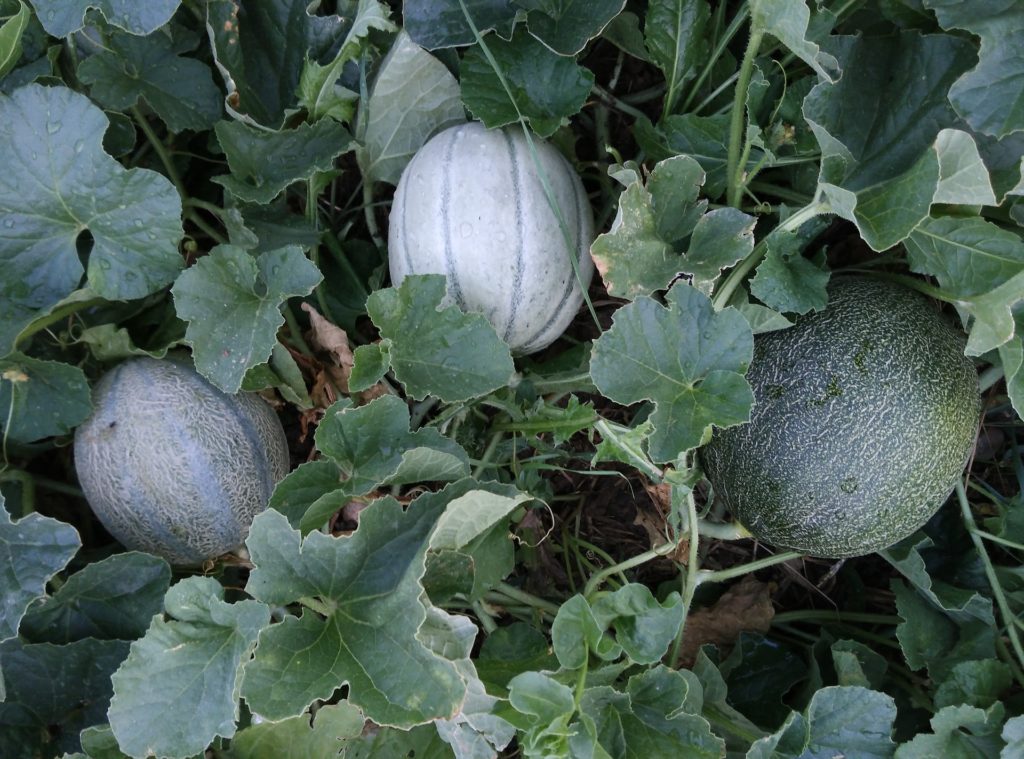
Melons are well-suited for hot climates and can be planted in May to enjoy a bountiful harvest.
Planting Tips and Varieties: Choose varieties like cantaloupe and watermelon. Plant seeds directly into well-drained, sandy soil when soil temperatures reach 70°F. Space seeds about 2-3 feet apart to allow for sprawling vines.
Care Considerations: Melons require full sun and are thirsty plants, needing consistent watering especially during fruit set. Apply a balanced fertilizer upon planting and make sure to provide strong support if growing melons on trellises. A thick layer of mulch will help maintain moisture and proper temperature. Be vigilant against pests such as aphids and squash bugs, and use neem oil or insecticidal soap to control them.
Sweet Potatoes
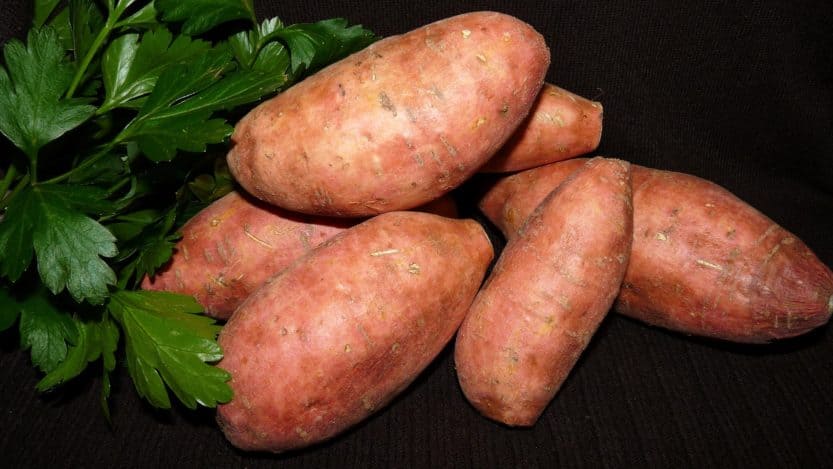
Sweet potatoes thrive in Arizona’s warm climate, making May ideal for planting.
Planting Tips and Varieties: Plant sweet potato slips in rich, well-draining soil when the soil temperature reaches at least 65°F. Space slips 12-18 inches apart to allow for root expansion.
Care Considerations: Sweet potatoes prefer full sun and require consistent watering during the first few months to encourage root development. After they establish, reduce watering as they are drought-resistant. Fertilize with a low-nitrogen fertilizer, and avoid letting weeds compete with the vines for nutrients. Consider planting them alongside nitrogen-fixing cover crops to enhance soil health.
Carrots
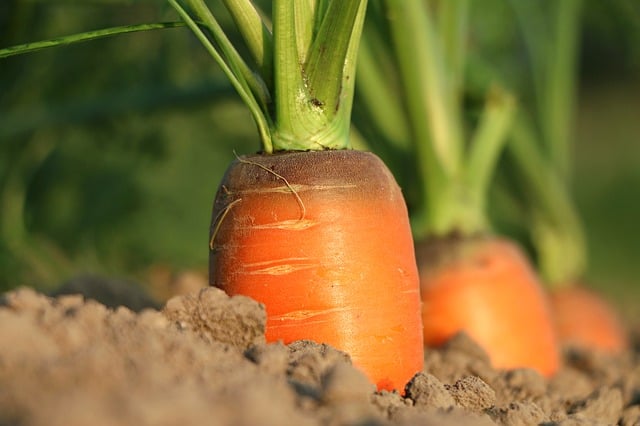
While a bit more challenging in the heat, carrots can still be successfully planted in May.
Planting Tips and Varieties: Opt for quick-maturing varieties like ‘Imperator’ or ‘Nantes’ and sow seeds directly in loose, well-prepared soil. Carrots should be spaced about 2 inches apart for optimal root development.
Care Considerations: Carrots prefer consistent moisture, especially during germination. Using a fine layer of mulch can help retain moisture and cool the soil. Regularly thin your seedlings to avoid overcrowding and improve air circulation. If carrots tend to get too hot, consider providing partial shade during the peak months to help them establish.
Desert Flowers To Plant
Desert Marigold (Baileya multiradiata)
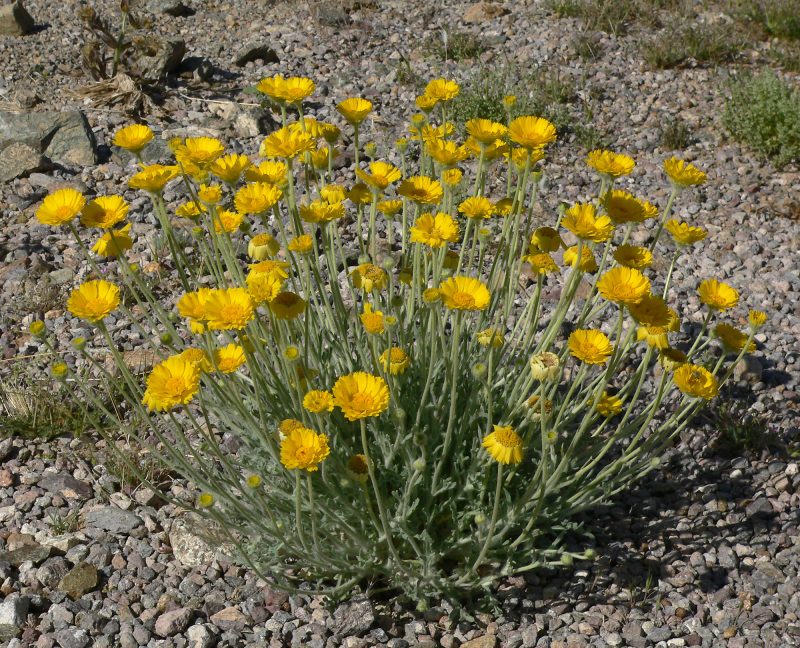
Desert marigolds are perfect for xeriscaping due to their stunning yellow blooms and low maintenance.
Planting Tips and Varieties: Best planted directly in well-draining sandy soils in full sun. Sow seeds directly into the garden or transplant seedlings.
Care Considerations: Desert marigolds thrive in dry, well-drained soils and are highly drought-tolerant once established. Providing minimal watering is crucial as overirrigation can lead to root rot. Deadheading spent flowers can encourage longer blooming periods, providing color from spring through summer and attracting various pollinators.
Mexican Gold Poppy (Eschscholzia californica)
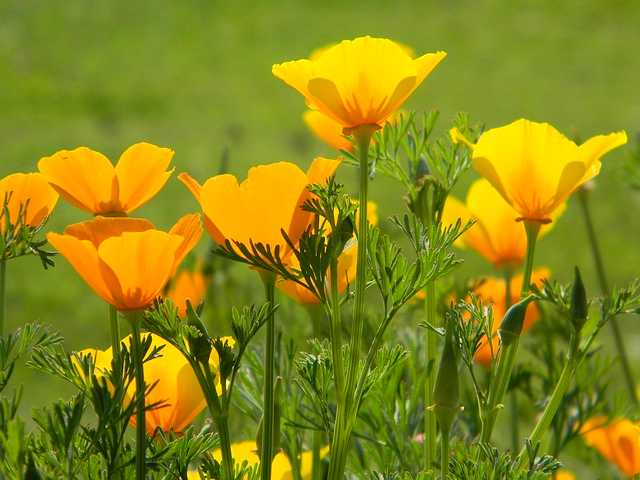
The Mexican gold poppy is an annual flowering plant that bursts into vibrant color in the spring.
Planting Tips and Varieties: Sow seeds directly into the soil in a sunny location. They prefer well-drained soil and can be sown in clusters for a dramatic effect.
Care Considerations: Water minimally; once established, these poppies thrive on rainwater. They are typically short-lived but self-seed aggressively, providing color every spring. Occasional deadheading of spent blooms promotes renewed growth and can extend the flowering season.
Desert Lupine (Lupinus sparsiflorus)
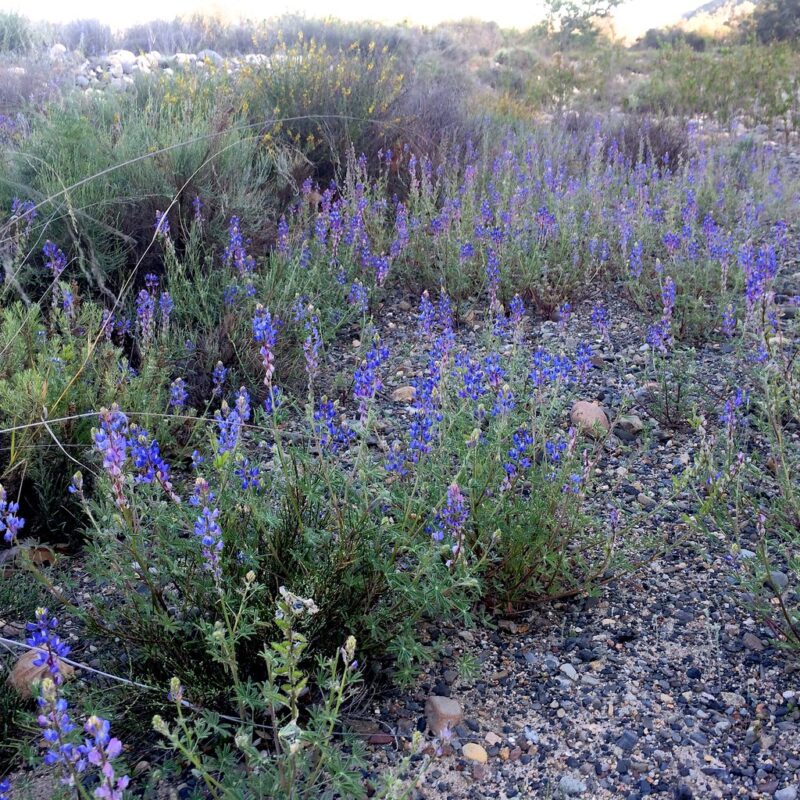
Desert lupines are native to Arizona and are perfect for adding pops of blue to your landscape.
Planting Tips and Varieties: Directly seed or transplant seedlings in full sun and well-drained soils.
Care Considerations: Lupines are nitrogen-fixing plants that enrich the soil, making them beneficial in garden rotations. Moderate watering is ideal during establishment, but they are drought-tolerant once fully developed. Removing spent flowers can promote further bloom production and keeps plants looking tidy.
Baja Ruellia (Ruellia peninsularis)
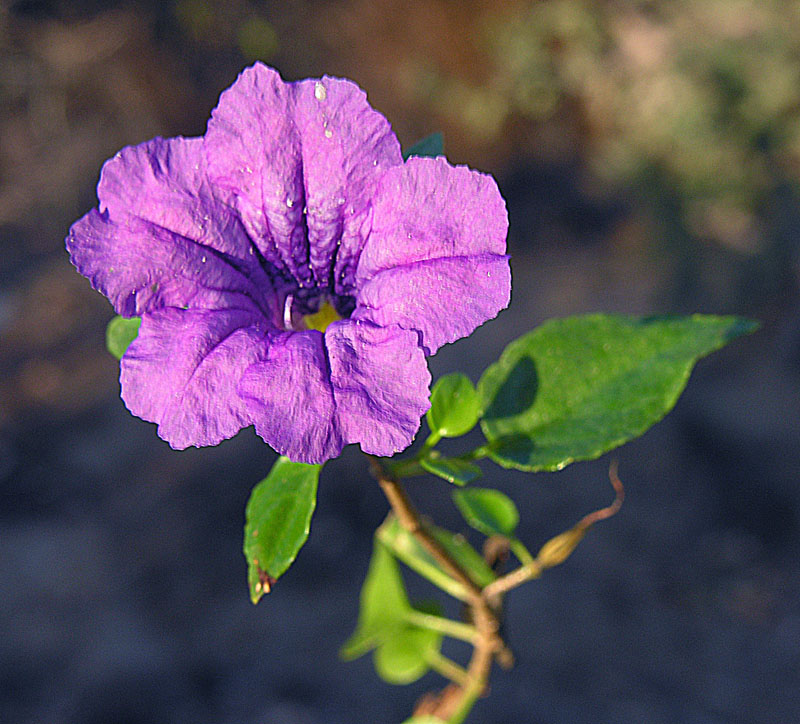
Baja ruellia produces lovely purple flowers that can continuously bloom in various conditions.
Planting Tips and Varieties: Plant in well-drained soil with full sunlight exposure. Consider spacing plants adequately to allow for their growth habit.
Care Considerations: Once established, Baja ruellia is drought-tolerant and requires minimal maintenance. Regular defoliation promotes denser bush growth and prolongs blooming. This hardy plant can also act as ground cover when planted en masse.
Desert Bluebell (Phacelia campanularia)
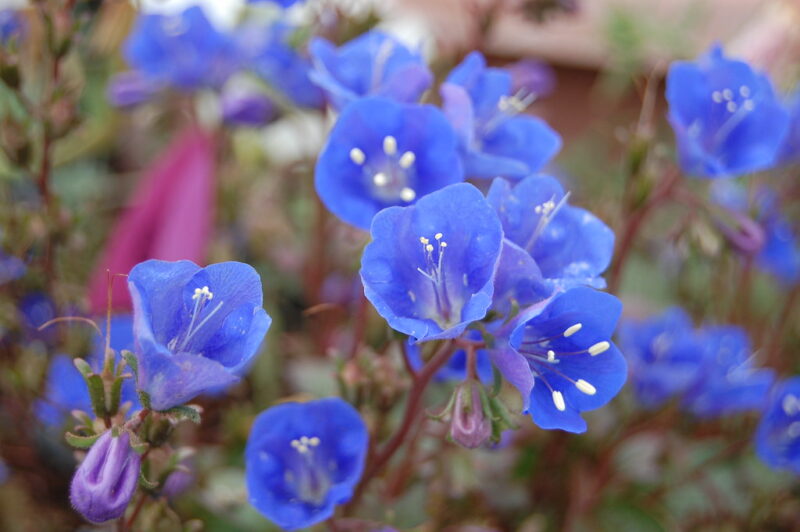
With its striking blue blooms, desert bluebell is an annual wildflower that thrives in desert conditions.
Planting Tips and Varieties: Directly sow seeds into full sun with well-drained soil. These blossoms can create a dramatic effect in spring gardens.
Care Considerations: Minimal water is required; they thrive on natural rainfall. Once established, desert bluebells flourish and self-seed for future growth. The flowers also attract bees and butterflies, supporting the local ecosystem.
Evening Primrose (Oenothera spp.)
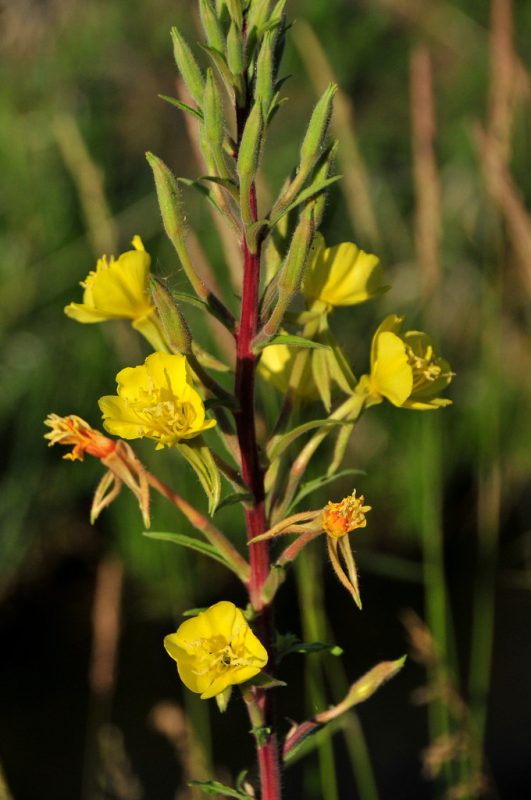
Known for its fragrant evening blooms, this wildflower is perfect for adding nocturnal beauty to your garden.
Planting Tips and Varieties: Sow seeds directly in the ground in full sun or partial shade, and they will produce lovely blooms.
Care Considerations: Evening primrose prefers well-drained soil and moderate watering. It is drought-resistant once established, but occasional watering through dry spells encourages more voluminous flowering. Deadheading can stimulate new blooms, providing aesthetic interest throughout the summer.
Mexican Sage (Salvia leucantha)
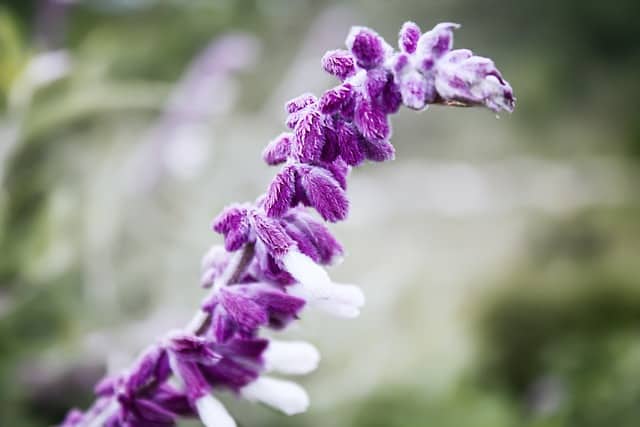
This plant garners popularity for its vibrant purple blooms and is sought after for pollinator-friendly gardens.
Planting Tips and Varieties: Plant in well-draining soil under full sunlight. Spacing the plants 18-24 inches apart allows for adequate airflow.
Care Considerations: They are drought-tolerant, thriving on minimal water once established. Regular pruning after peak blooming promotes bushy growth and extends the flowering period. It’s vital to keep an eye out for aphids and caterpillars, applying organic insecticide as needed to remain eco-friendly.
Verbena (Verbena spp.)
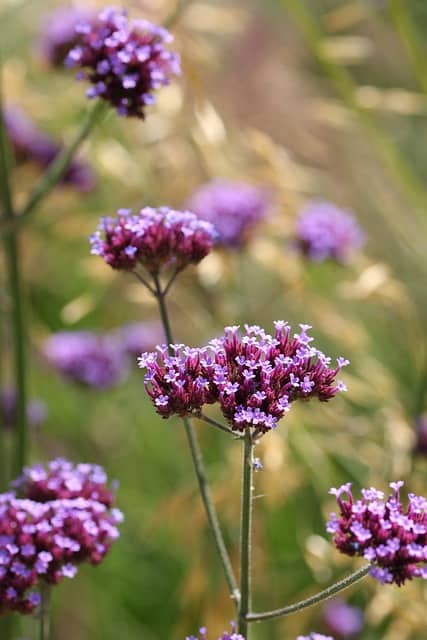
Verbena creates colorful displays in sunny locations, promising abundant blooms throughout the growing season.
Planting Tips and Varieties: Plant verbena in well-draining soil in full sun. Direct sow seeds or use transplants to establish clusters of color.
Care Considerations: Ensure they have sufficient space to allow for sprawling. Verbena is drought-tolerant once established, requiring watering only during long dry spells. Regular deadheading extends the blooming period, and avoid getting water on the foliage to lower the risk of fungal diseases.
Yarrow (Achillea millefolium)
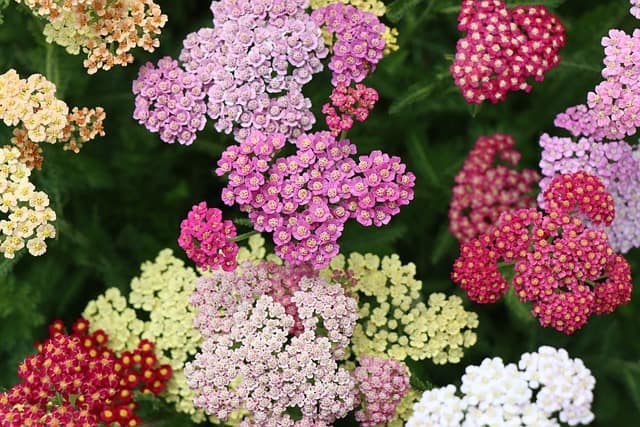
Yarrow is a resilient perennial known for its feathery foliage and clusters of flowers.
Planting Tips and Varieties: Plant yarrow in well-drained soil with ample sunlight. Consider sowing seeds or transplants for robust growth.
Care Considerations: Once established, yarrow is drought-tolerant and requires minimal moisture. This wildflower also tolerates poor soil conditions while attracting butterflies and beneficial insects. Deadheading ensures prolonged blooming and promotes bushier foliage.
Coneflower (Echinacea spp.)
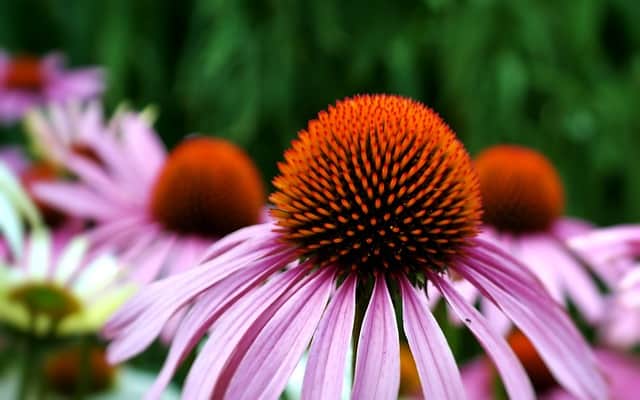
Notably adored for their nutritional and medicinal properties, coneflowers also attract pollinators.
Planting Tips and Varieties: Plant in full sun with well-drained soil. Space them adequately to ensure airflow and growth.
Care Considerations: Coneflowers are drought-tolerant and require minimal watering once established. Division is recommended every few years for rejuvenation, and deadheading can stimulate further blooms through summer. Watch for pests such as aphids and treat them with insecticidal soap to protect your plants.
Desert Perennial Flowers to Plant
Agastache (Agastache spp.)
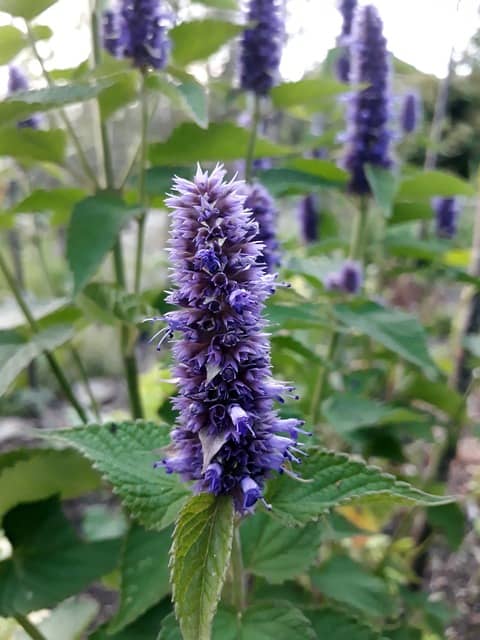
Agastache is known for its aromatic foliage and vibrant blooms that attract pollinators.
Planting Tips and Varieties: Plant in well-drained soil with exposure to full sun. They thrive in clusters and should be spaced 12-18 inches apart.
Care Considerations: Agastache prefers moderate watering—allow the soil to dry out between waterings. Once established, the plant is relatively drought-tolerant. Deadheading spent flowers will promote additional blooms, while regular trimming can encourage bushy growth.
Coreopsis (Coreopsis spp.)
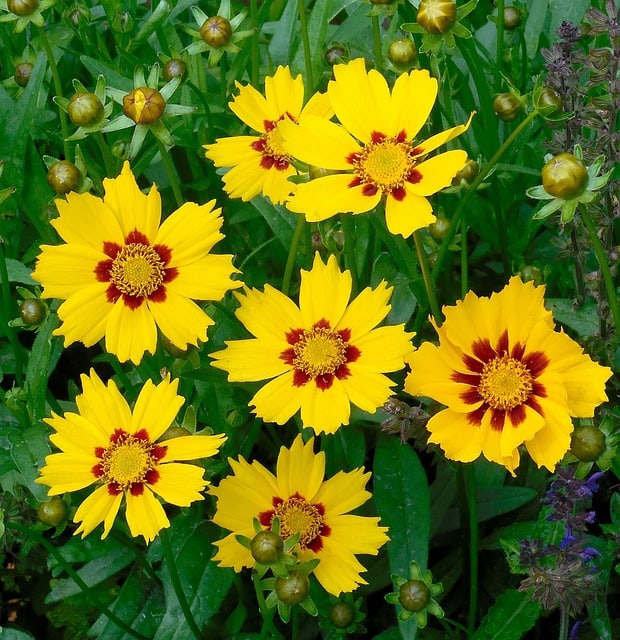
Coreopsis offers easy-to-grow, bright blooms that enhance desert landscapes.
Planting Tips and Varieties: Sow seeds directly into well-drained soil in full sunlight. Space them 12 inches apart for generous airflow.
Care Considerations: This drought-tolerant perennial flourishes with minimal care. Regular deadheading can extend the blooming period. Check them routinely for aphids or other pests that may emerge with warmer temperatures.
Gaillardia (Gaillardia pulchella)
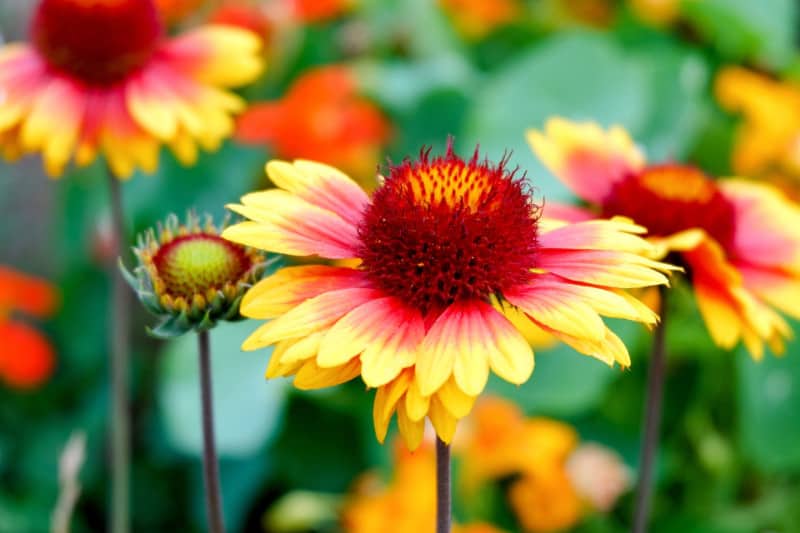
Gaillardia, or blanket flower, is known for its striking red and yellow blooms.
Planting Tips and Varieties: Plant in well-drained soil with full sun exposure. Direct sow or use transplants 12-24 inches apart.
Care Considerations: Drought-tolerant and easy to maintain, they require minimal watering once established. Deadheading faded flowers promotes later blooms, extending the flowering season well into late summer.
Lantana (Lantana camara)
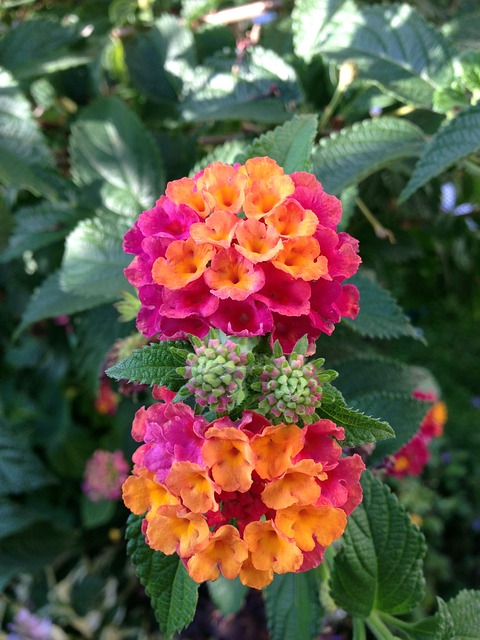
Lantana thrives in warm, sunny conditions, adding a burst of color to gardens.
Planting Tips and Varieties: Space 18-24 inches apart for optimal growth. Plant in sunny areas with rich, well-drained soil.
Care Considerations: Once established, Lantana is drought-tolerant. It requires regular watering during establishment but can handle dry spells easily thereafter. Pruning back after flowering can encourage bushier growth and more blooms in the following season, while also managing its spread.
Red Hot Poker (Kniphofia uvaria)
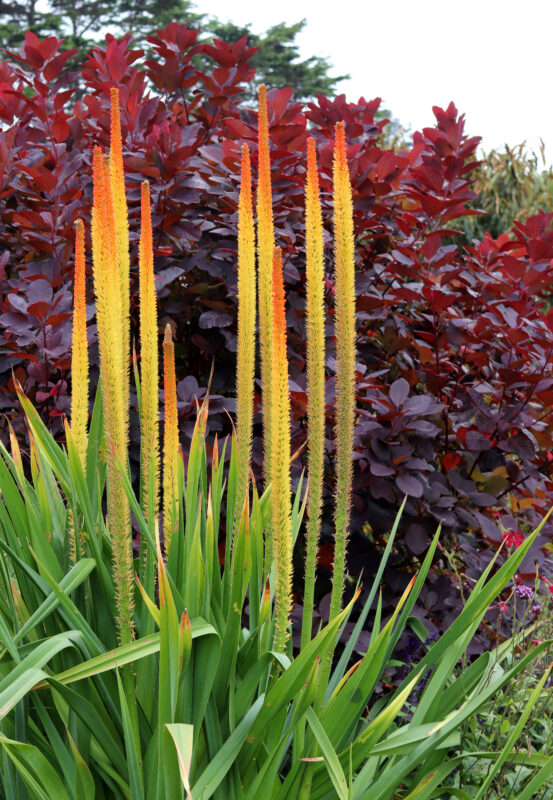
The red hot poker plant is a striking addition to any garden with its tall spikes of flower color.
Planting Tips and Varieties: Plant in well-drained soil with full sun. Space plants 18-24 inches apart to allow for growth.
Care Considerations: Regular watering is critical for the first month after planting. Once established, water less frequently. Deadheading encourages continued blooming; however, avoid overwatering during dormancy, as this can lead to root rot.
Salvia (Salvia spp.)
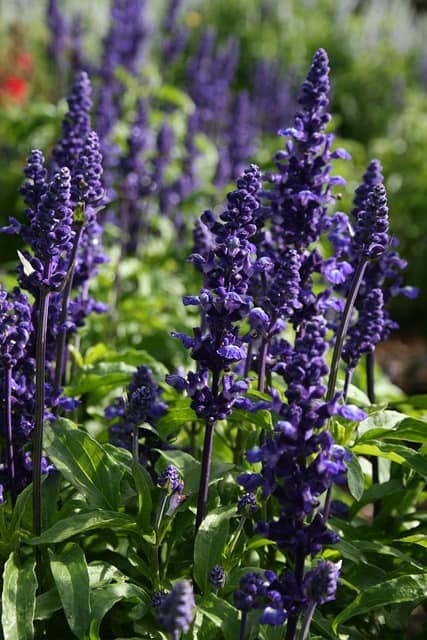
Salvia boasts an array of varieties, often attracting both bees and butterflies.
Planting Tips and Varieties: Plant in well-drained soil under full sun for healthy growth. Spacing should allow adequate air circulation, generally 12-18 inches apart, depending on the variety.
Care Considerations: Water regularly, especially during dry spells and while establishing, then reduce frequency. Pruning back after flowering encourages fuller growth and reduced leggy behavior. Keep an eye out for pests like aphids, which can be managed with organic insecticides.
Verbena (Verbena spp.)

As an easy-care plant, verbena offers vibrant blooms throughout the summer.
Planting Tips and Varieties: Plant in well-drained soil with full sun exposure. You can use either seeds or transplants, ensuring they have ample room to spread.
Care Considerations: They thrive with minimal watering, but it is essential to keep the soil moist when first establishing. Regular deadheading extends the blooming season and keeps the plants looking fresh. Avoiding overhead watering reduces the risk of fungal diseases.
Yarrow (Achillea millefolium)

Yarrow is prized for its aromatic foliage and small flower clusters.
Planting Tips and Varieties: Plant in well-draining soil, preferring full sun. These hardy perennials can be seeded or transplanted at least 18 inches apart.
Care Considerations: Yarrow requires little water once established, making it ideal for xeriscaping. Deadheading promotes further growth, and regular inspection for pests will ensure a healthy plant. It’s also known for being deer-resistant.
Butterfly Bush (Buddleja davidii)
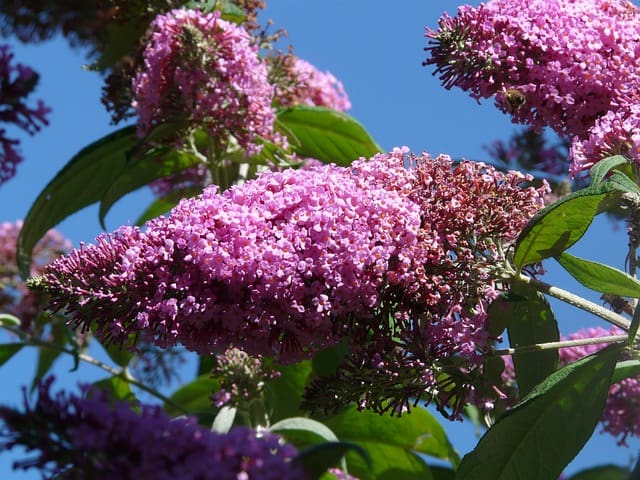
The butterfly bush attracts butterflies with its long spikes of fragrant blooms.
Planting Tips and Varieties: Space these plants 3-4 feet apart in well-drained soil with lots of sun exposure.
Care Considerations: Water regularly establishing plants, then reduce frequency. Pruning back in early spring encourages vigorous growth and more blooms in the summer. Keep an eye on its spreading nature to prevent crowding in your garden.
Desert Bulbs To Plant
Tulbaghia (Tulbaghia violacea)
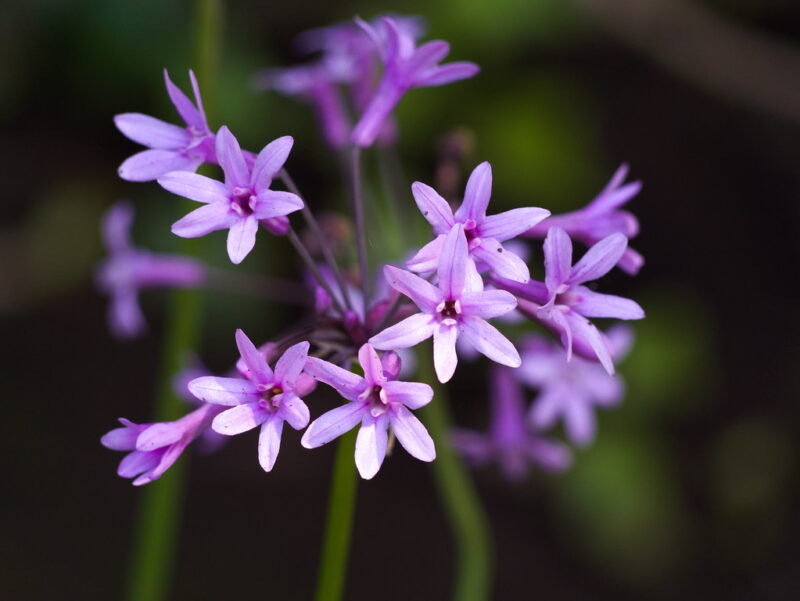
Tulbaghia, or society garlic, is a hardy bulb that thrives in desert conditions.
Planting Tips and Varieties: Plant in sunny locations with sandy or well-drained soils, and space them about 12-15 inches apart.
Care Considerations: Water moderately and allow soil to dry out between waterings, as these bulbs are drought-tolerant once established. Their garlic-scented leaves can deter pests, and deadheading spent blooms helps prolong flowering through the summer.
Watsonia (Watsonia spp.)
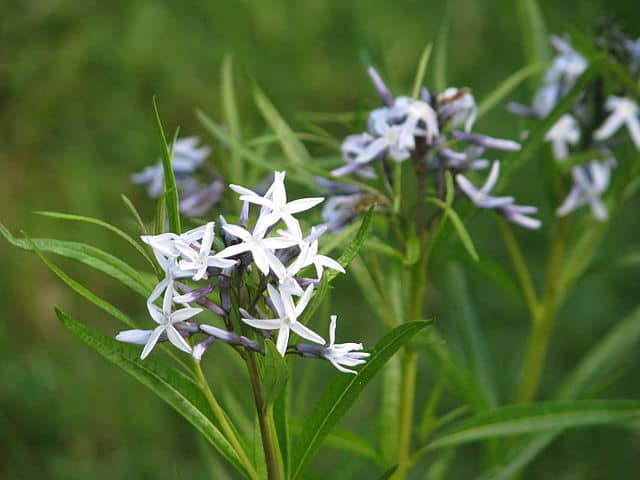
Watsonia produces impressive flower spikes and is ideal for adding vertical interest to gardens.
Planting Tips and Varieties: Plant in sandy, well-drained soils in sunny conditions. Space bulbs about 12 inches apart to allow for their expansion.
Care Considerations: Water most during flowering and reduce thereafter, allowing the soil to dry between intervals. Deadheading will encourage more blooms, and applying mulch can help curb weeds and increase moisture retention.
Amaryllis (Hippeastrum spp.)
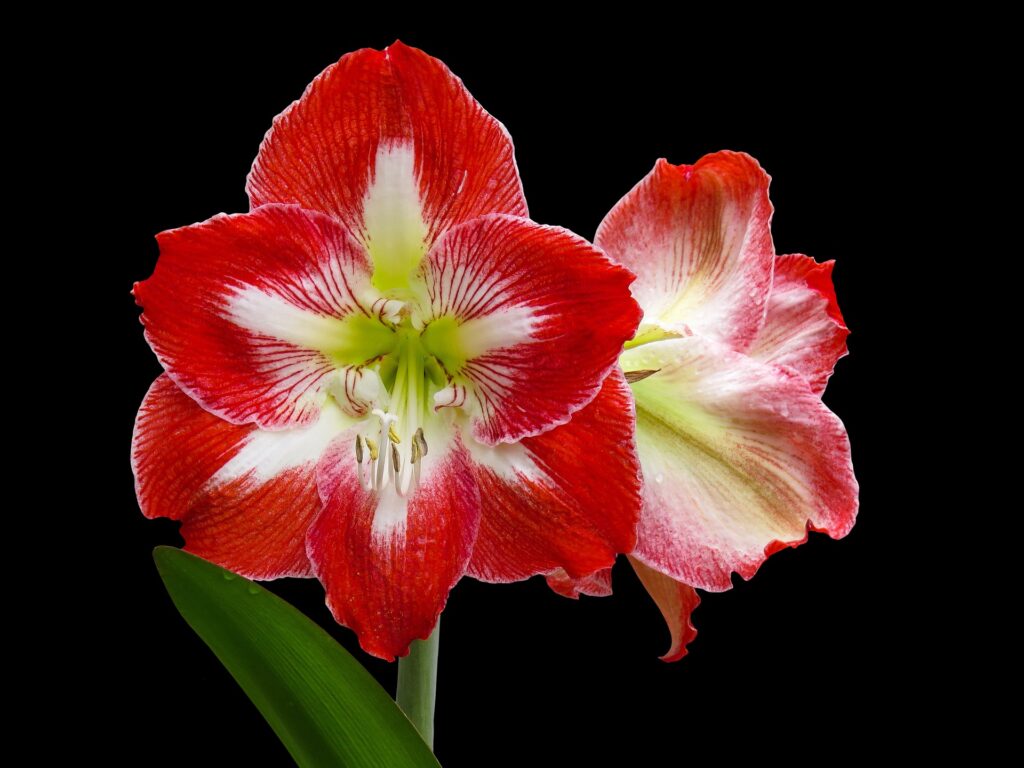
While usually grown indoors, certain amaryllis varieties can thrive outdoors in Arizona when planted in May.
Planting Tips and Varieties: Choose a sunny location with well-drained soils. Plant bulbs about 6-8 inches deep for optimal growth.
Care Considerations: Water regularly while they are establishing, then reduce after blooming. Ensure they receive full sun exposure for robust flowering. Fertilizing monthly during growth can support healthier blooms for the following year.
Freesia (Freesia spp.)
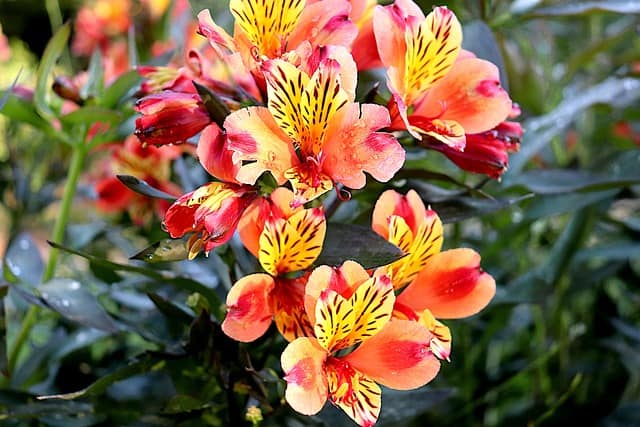
Freesias are prized for their fragrant blooms and vibrant colors.
Planting Tips and Varieties: Plant them in well-drained soil under full sun or partial shade, spacing them about 6-12 inches apart.
Care Considerations: Regular watering is essential until buds emerge and continued watering is necessary during flowering. After plants finish blooming, reduce watering until dormancy. Mulch can help retain soil moisture and regulate temperature.
Dutch Iris (Iris hollandica)

Dutch irises are popular for their beautiful flowers resulting from regular cultivation and thriving in temperate climates.
Planting Tips and Varieties: Plant bulbs in well-drained soils with full sun for approximately 6-8 inches deep. Space them about 12 inches apart.
Care Considerations: Water well during the active growth phase and use mulch to retain soil moisture. Once flowers fade, reduce watering significantly. If planted in well-drained soil, they thrive on little maintenance.
Allium (Allium spp.)
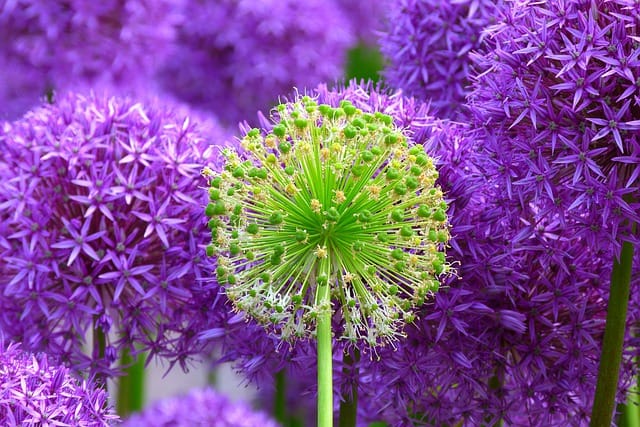
Allium bulbs offer architectural heights and stunning spherical blooms.
Planting Tips and Varieties: Plant in well-draining soil under full sun exposure, spacing bulbs about 6-8 inches apart at a depth of 4-6 inches.
Care Considerations: Water during establishment and when the foliage is green. Once established, they require little care; however, avoid excess moisture during dormancy. Removing spent flowers can promote bulb health for future seasons.
Crocosmia (Crocosmia spp.)
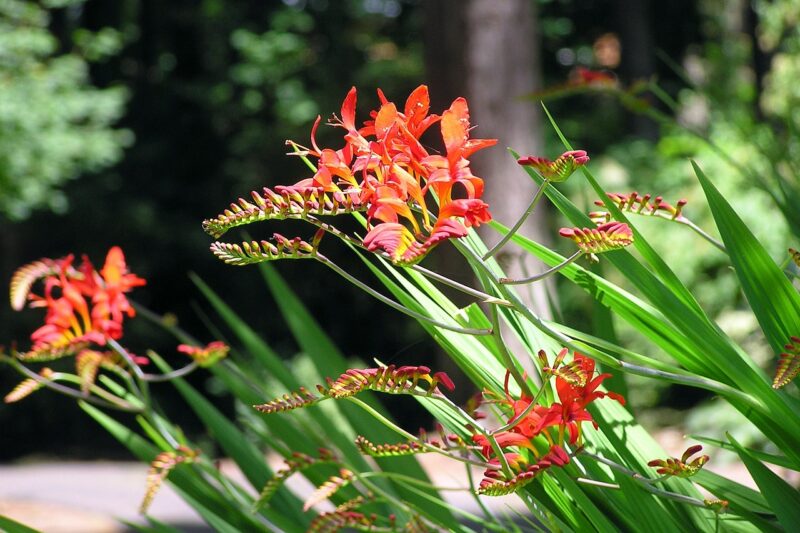
Crocosmia produces bold, eye-catching flowers that handle the heat well.
Planting Tips and Varieties: Plant in well-drained soil with ample sunlight, spacing bulbs about 12 inches apart.
Care Considerations: Water regularly until established, then reduce watering frequency. Crocosmia benefits from mulch to maintain moisture while suppressing weeds. Cut back foliage at the end of the growing season for plant health.
Scilla (Scilla spp.)
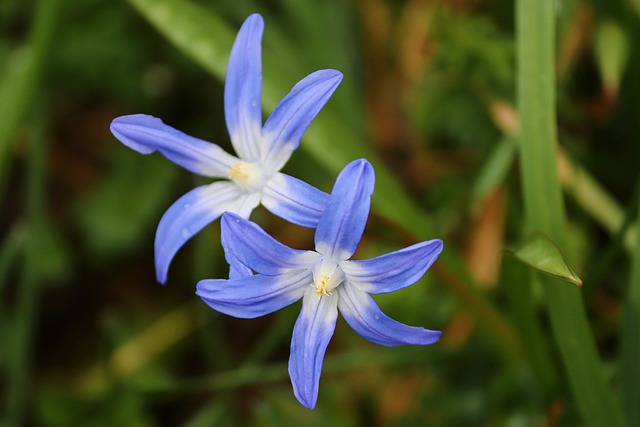
Scilla bulbs provide charming clusters of blue blooms in the garden.
Planting Tips and Varieties: Plant in well-drained soils with partial to full sun, spacing bulbs about 6-8 inches apart.
Care Considerations: Water lightly to keep the soil moist during the growth phase; once established, moderate moisture suffices. Avoid overwatering to prevent bulb rot. The bulb can return annually with minimal care.
Sparaxis (Sparaxis spp.)
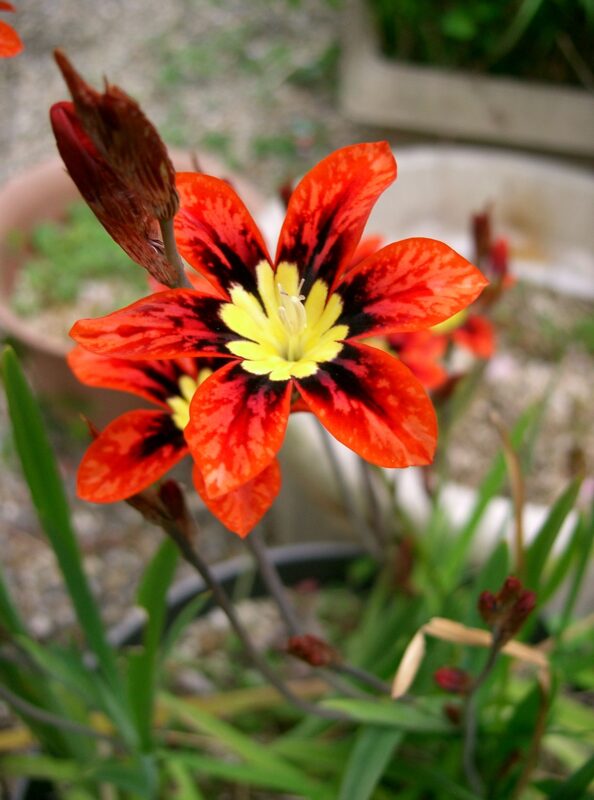
Sparaxis boasts vibrant, star-shaped blooms with color variations.
Planting Tips and Varieties: This bulb thrives in well-drained, sandy soil and can be planted in sunny locations, spaced 4-6 inches apart.
Care Considerations: Water at planting time to establish, then water moderately but reduce frequency in the summer to prevent rotting. Regular weeding helps the bulbs thrive, and consider planting in clusters for more significant visual impact.
Daffodil (Narcissus spp.)
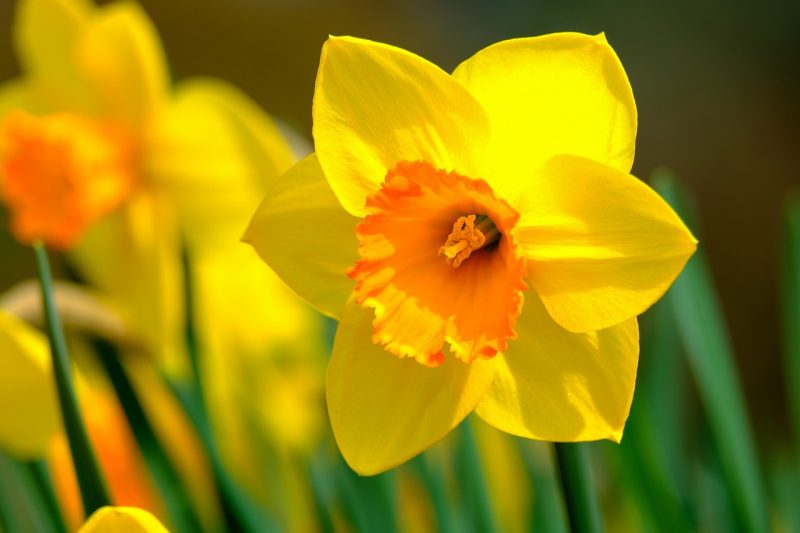
Daffodils can adapt to desert environments, particularly if selecting drought-tolerant varieties.
Planting Tips and Varieties: Plant in well-drained soils in full sun, spacing bulbs about 12 inches apart, and positioning them 6-8 inches deep.
Care Considerations: Water generously at planting but reduce after flowering fades for the year. Allow foliage to yellow before cutting back to help bulbs store energy for next season. With the right conditions, these hardy bulbs can thrive and return each spring.
Desert Fruits to Plant
Prickly Pear Cactus (Opuntia spp.)
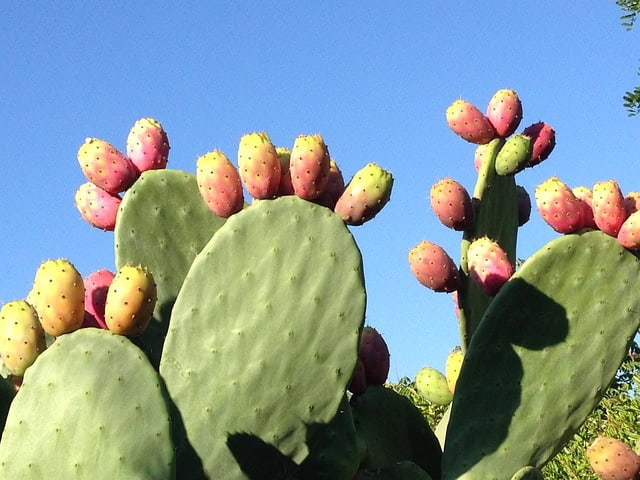
Prickly pears are a staple in desert gardens, known for their vibrant fruits and pads.
Planting Tips and Varieties: Plant pads in well-draining sandy soils, ensuring they receive full sunlight. Space pads adequately to allow for growth.
Care Considerations: Minimal watering is needed, focusing solely on establishing roots during the early growth phase. Watch for pests such as cochineal and treat them organically if necessary. The fruits and pads can be harvested during the summer for culinary delights.
Desert Willow (Chilopsis linearis)
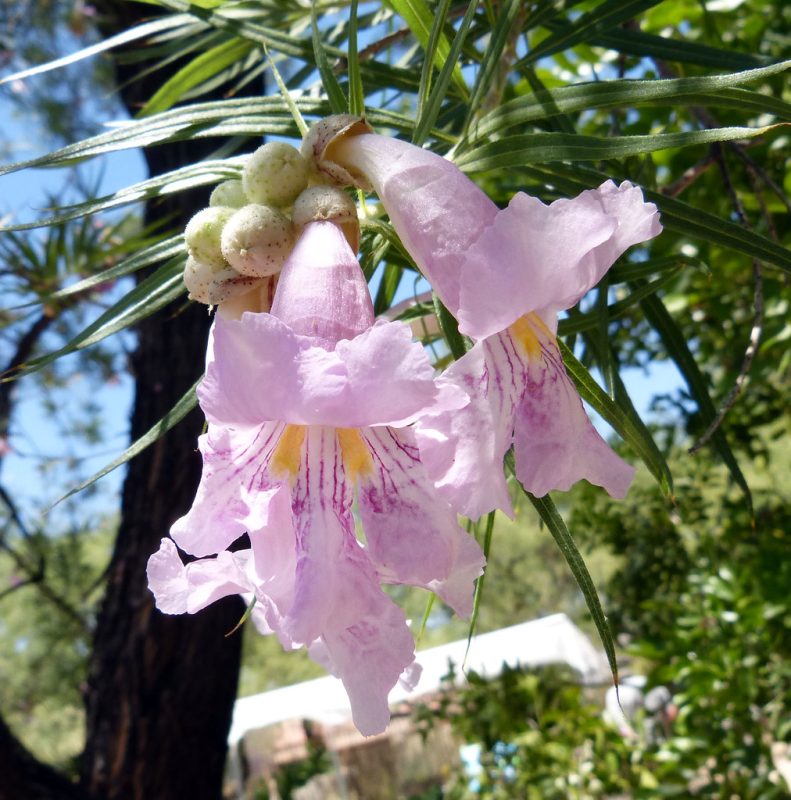
The desert willow not only provides shade but produces stunning flowers that attract pollinators.
Planting Tips and Varieties: Plant in well-draining soils under full sun, giving it ample room to grow. Space trees 15-20 feet apart.
Care Considerations: Once established, desert willows require little water. Regular watering during formative years aids growth. Pruning can encourage bushier growth and remove any dead branches.
Fig (Ficus carica)
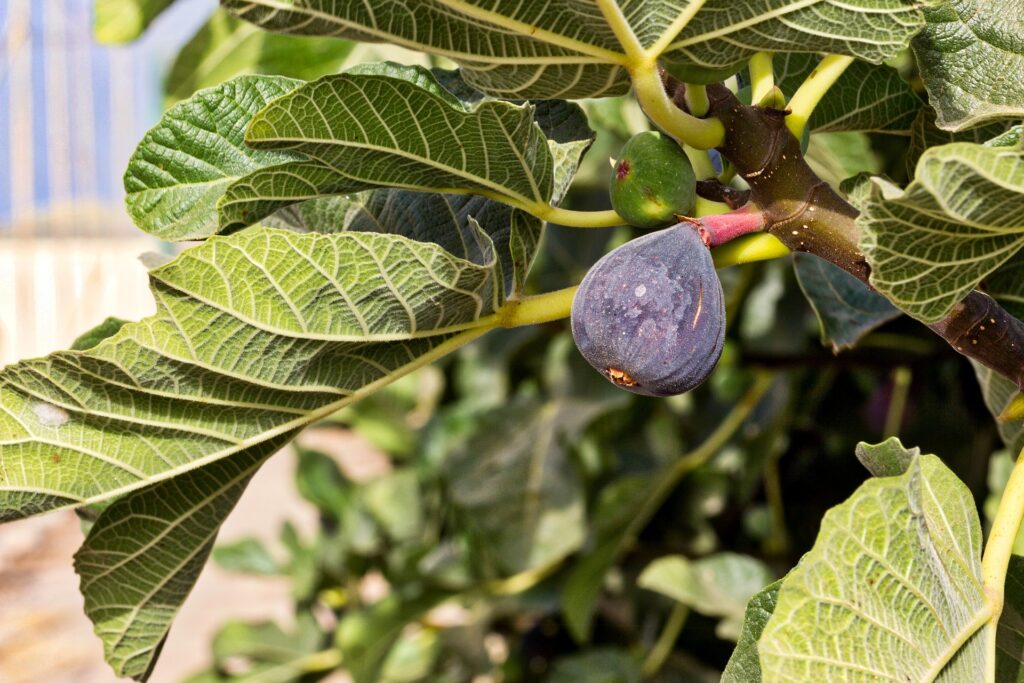
Fig trees thrive in warm climates and produce sweet, edible fruits.
Planting Tips and Varieties: Plant in full sun and rich, well-drained soil, spacing trees about 10-15 feet apart.
Care Considerations: Regular watering supports fruit development; however, allow the soil to dry slightly between watering sessions. Fertilizing in the spring can encourage healthy foliage and fruit development. Inspect for pests such as scale and address them immediately.
Pomegranate (Punica granatum)
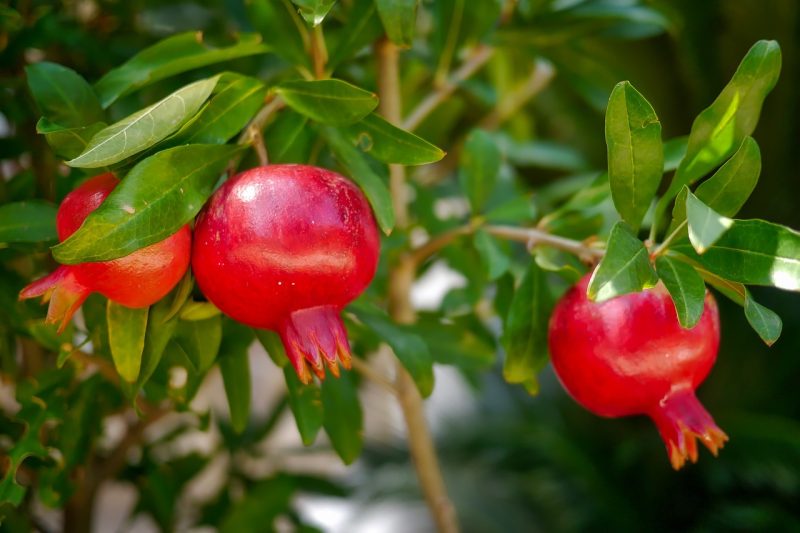
Pomegranate trees are admired for their striking fruits and exuberant blossoms.
Planting Tips and Varieties: Plant in well-drained soil with plenty of sunlight. Pomegranate trees can be spaced around 10-12 feet apart for optimal growth.
Care Considerations: Water regularly until established, then reduce frequency. These hardy trees are drought-resistant and can thrive in poor soils. Fertilizing in early spring can promote flower production and fruiting.
Jujube (Ziziphus jujuba)
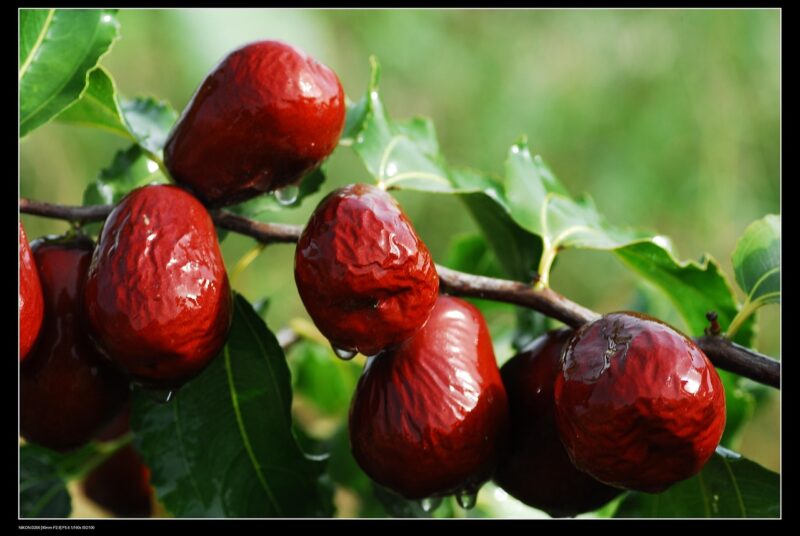
Jujube trees grow well in arid conditions, producing sweet, edible fruit.
Planting Tips and Varieties: Plant jujube in well-drained, sandy soils in full sun, ensuring adequate space around them.
Care Considerations: Once established, they require minimal watering and can thrive on rainfall alone. These low-maintenance trees need occasional pruning for structure and to control growth.
Goji Berries (Lycium barbarum)
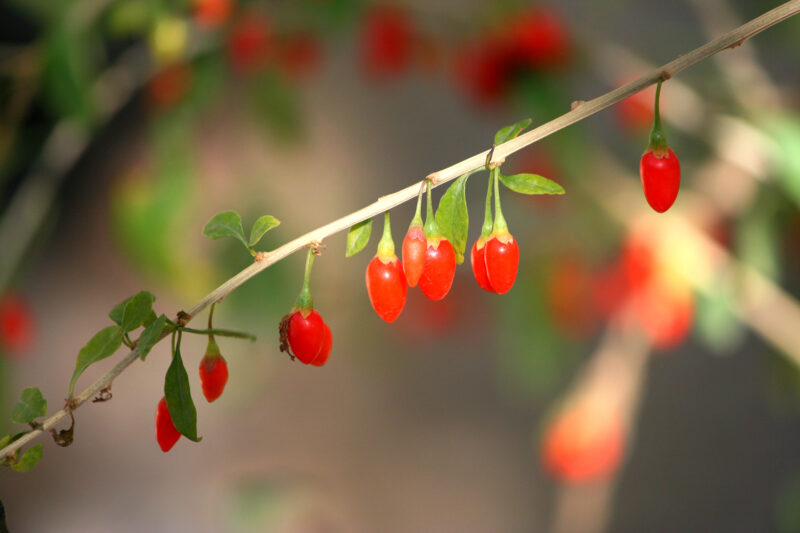
Goji berries are nutrient-dense and grow well in desert climates.
Planting Tips and Varieties: Plant in full sunlight in well-draining soil, spacing plants about 3-4 feet apart to encourage airflow.
Care Considerations: Consistent moisture is essential until established; once set, they are drought-tolerant. Regular pruning in late winter can increase yields during the growing season. Watch for aphids and scale pests and address them promptly.
Mulberry (Morus spp.)
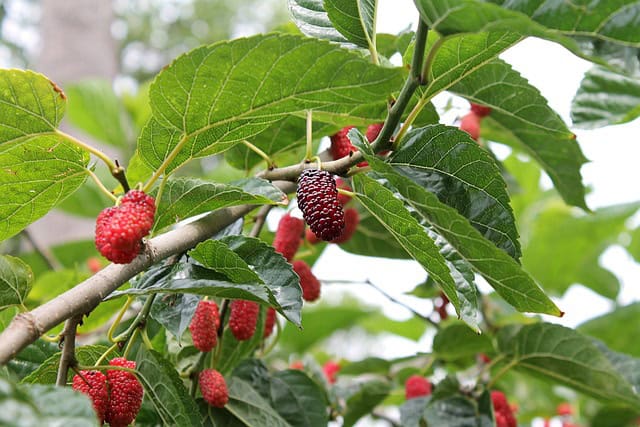
Mulberry trees yield sweet fruits biennially, making them highly desirable.
Planting Tips and Varieties: Plant in rich, well-drained soil under full sun, allowing them ample space to grow (15-20 feet apart).
Care Considerations: They establish quickly but require regular watering to support growth, especially during fruit development. Fertilizing annually in spring encourages healthy flowering and fruiting.
Blackberry (Rubus spp.)
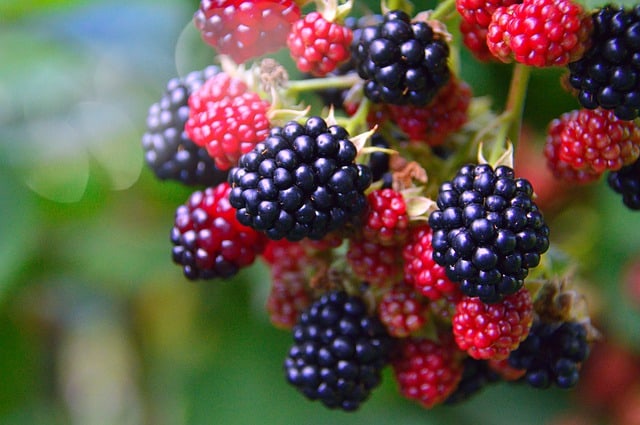
Blackberries thrive in Arizona’s warm climate and produce sweet, juicy fruits.
Planting Tips and Varieties: Choose a location with loamy, well-drained soil and ample sunlight, spacing plants 3-4 feet apart.
Care Considerations: Water consistently during fruiting and growth phases, especially in hotter months. Consider installing trellises to support the canes, and prune after fruiting to maintain growth and manage shape.
Honeyberry (Lonicera caerulea)
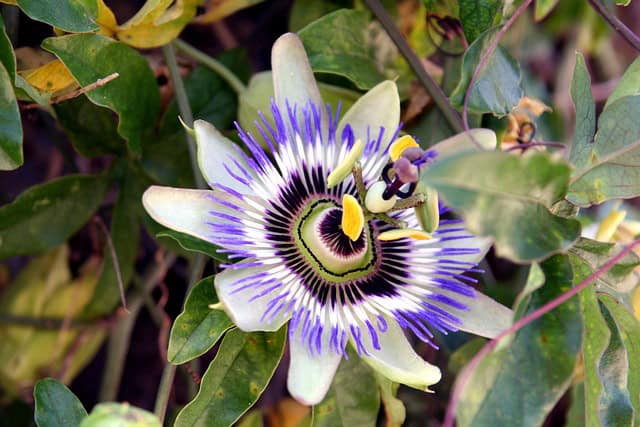
Honeyberries are nutrient-rich fruits that thrive in warmer, arid climates.
Planting Tips and Varieties: Plant in well-drained soil, spacing plants 3 feet apart in a sunny location.
Care Considerations: Water consistently during the first growing season, reducing frequency as they establish. Regular pruning encourages bushier growth. Monitor for pests and diseases, managing them promptly to ensure healthy growth.
Herbs To Plant
Oregano (Origanum vulgare)
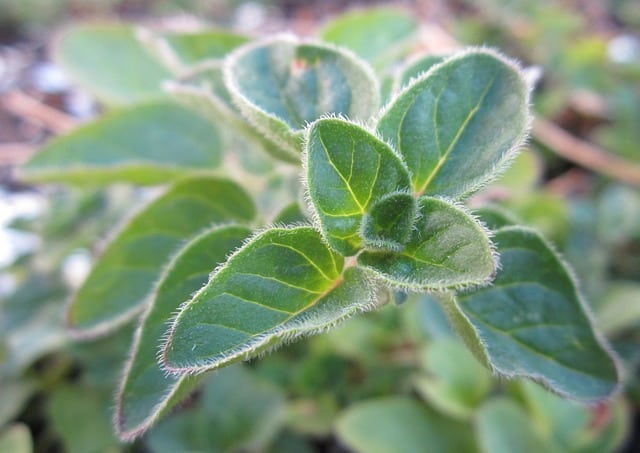
Oregano is a popular culinary herb that thrives in warm climates.
Planting Tips and Varieties: Plant in full sun and well-draining soil. Space plants about 12-18 inches apart for adequate airflow.
Care Considerations: Oregano thrives on little water, seeking dry conditions once established. Regularly harvest to stimulate growth, and prune back to encourage bushiness. An organic fertilizer during establishment can support initial growth.
Thyme (Thymus spp.)
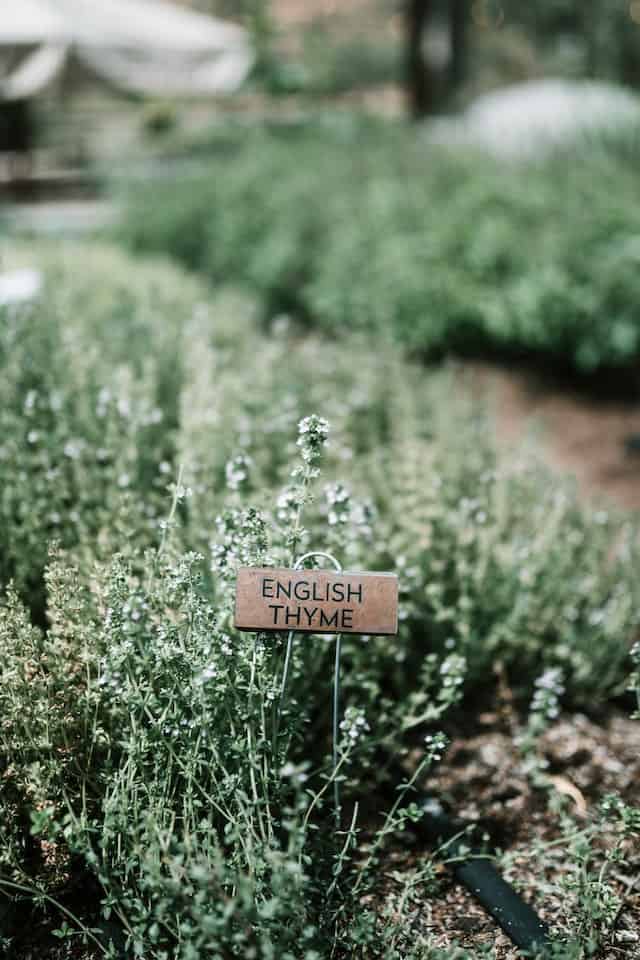
Thyme is drought-tolerant and ideal for desert gardens.
Planting Tips and Varieties: Plant in well-drained soil with at least six hours of sunlight daily. Space plants around 12 inches apart to allow for spreading.
Care Considerations: Once established, thyme requires minimal water. Regular trimmings after flowering help keep it looking neat and bushy, while also producing flavorful culinary herbs. Watch for aphids and treat them organically.
Rosemary (Rosmarinus officinalis)
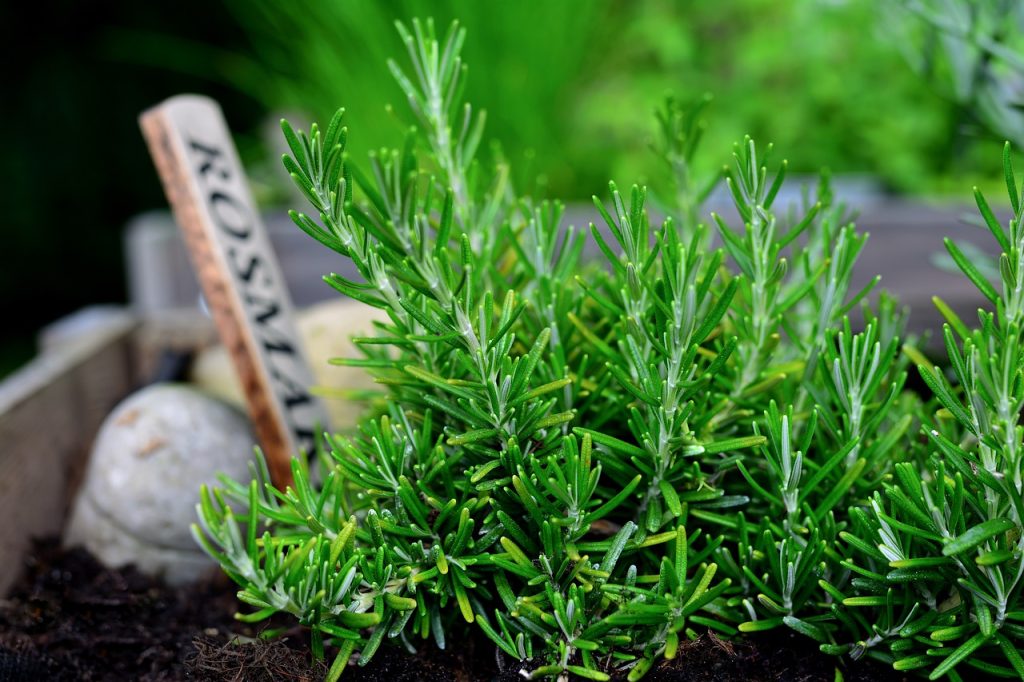
Rosemary flourishes in warm weather, adding fragrance and flavor to dishes.
Planting Tips and Varieties: Plant in well-draining soil with plenty of sunlight. Space plants about 2-3 feet apart for optimal growth.
Care Considerations: Rosemary prefers drier conditions; water regular but allow the soil to dry out between intervals. Pruning helps shape the plant while retaining lush growth, and it can withstand high temperatures with minimal care.
Sage (Salvia officinalis)
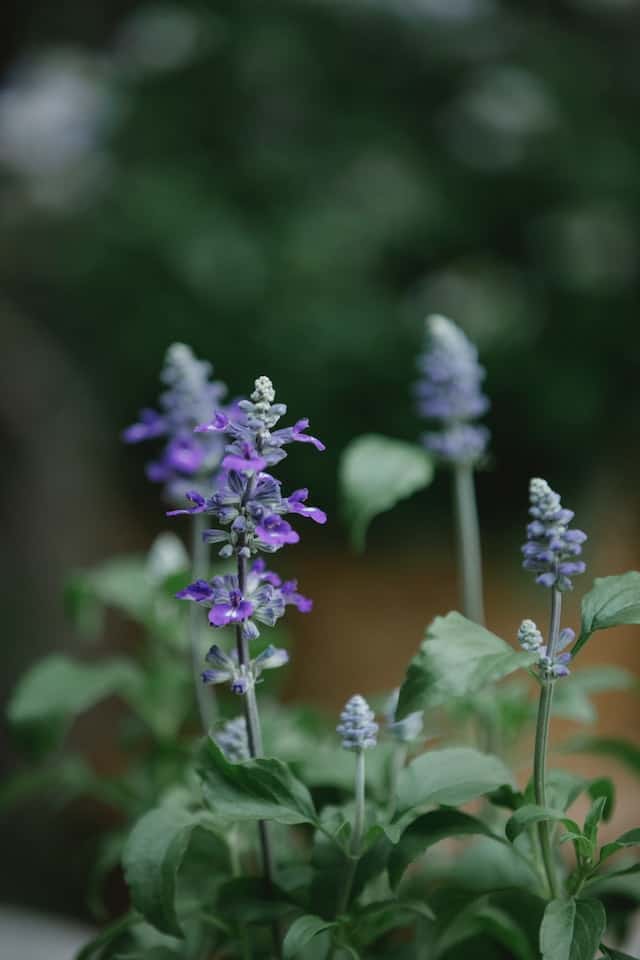
Sage is a hardy herb that loves warmth and sunny exposure.
Planting Tips and Varieties: Plant in well-drained soil with direct sunlight, spacing them about 2 feet apart.
Care Considerations: Once established, sage is drought-tolerant and needs minimal watering. Pruning after harvest encourages fuller plants and improved flavor.
Basil (Ocimum basilicum)
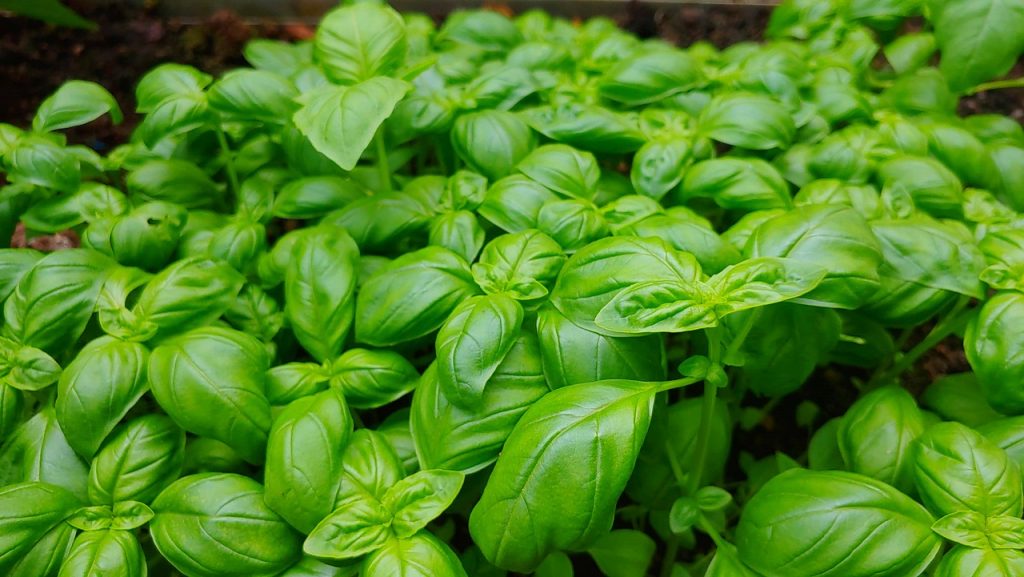
Basil thrives in warm weather and is versatile in the kitchen.
Planting Tips and Varieties: Grow in rich soil that drains well and in full sunlight, spacing seedlings or seeds 12-18 inches apart.
Care Considerations: Keep soil evenly moist during establishment but ensure good air circulation. Harvesting leaves regularly encourages bushy growth. Consider companion planting with peppers or tomatoes to enhance both growth and flavor.
Mint (Mentha spp.)
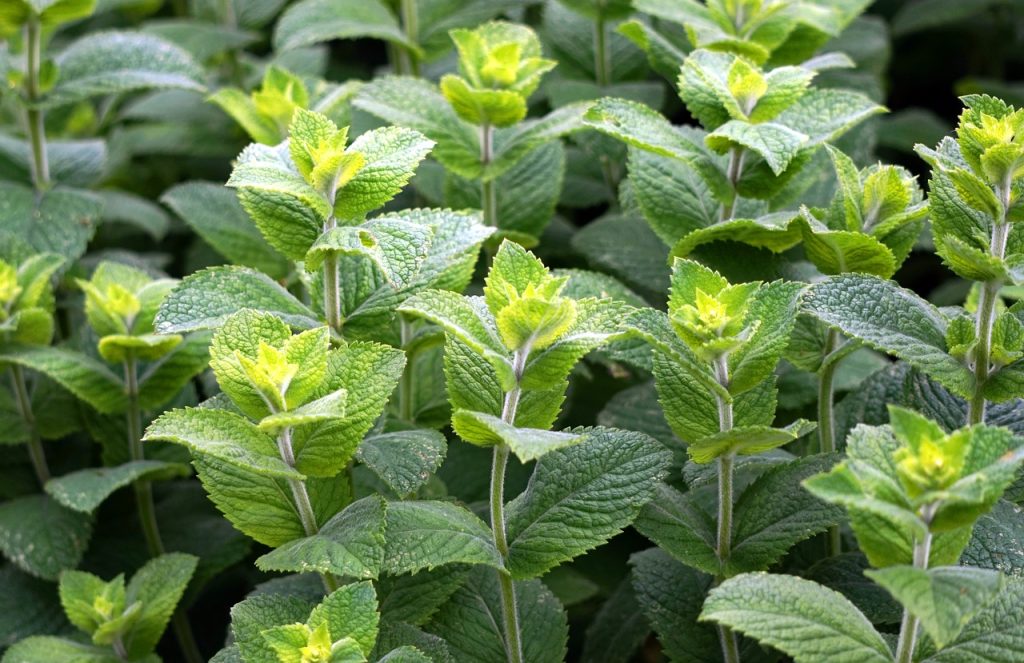
Mint loves moisture and can grow prolifically.
Planting Tips and Varieties: Plant in containers or in a designated area of the garden with rich soil and partial shade to prevent it from becoming invasive.
Care Considerations: Regular watering is needed to maintain its growth; allow it to dry slightly between sessions. Regular pruning enhances flavor and uplifts the plant’s aesthetic quality.
Dill (Anethum graveolens)
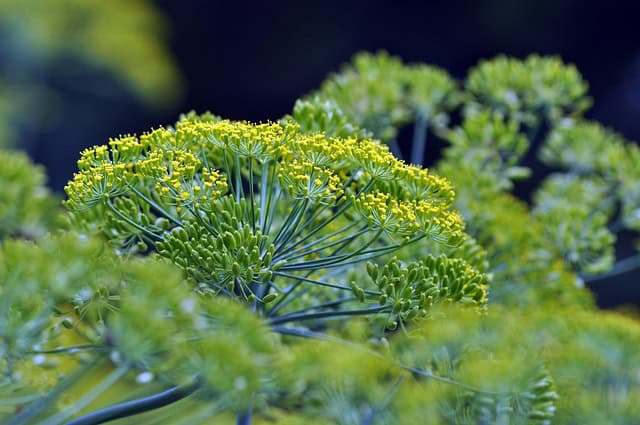
Dill is a fast-growing herb ideal for summer gardens.
Planting Tips and Varieties: Sow seeds in well-drained soil in full sun, spacing seeds about 12 inches apart.
Care Considerations: Water consistently to keep the soil evenly moist during germination. If large plants appear, reduce water to encourage a better flavor profile. Prune regularly to maintain growth and prevent bolting into flower too quickly.
Chives (Allium schoenoprasum)
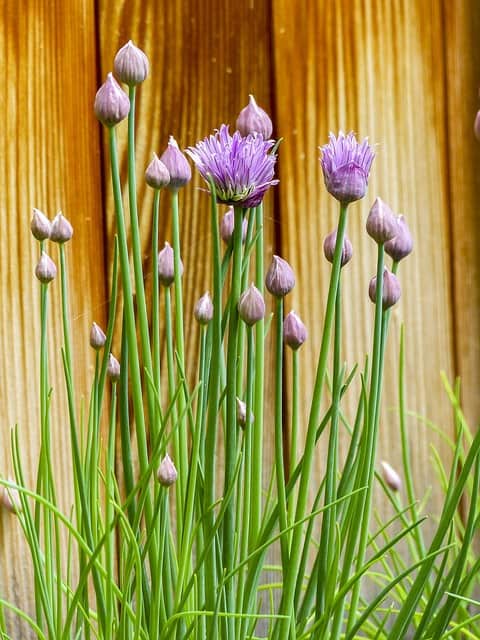
Chives are hardy and provide flavor both fresh and as a garnish.
Planting Tips and Varieties: Plant in well-drained soil with full sun exposure, spacing plants about 12 inches apart for growth.
Care Considerations: Once established, chives are drought-resistant and require little care. Ensure regular harvesting to promote healthy growth and robust flavor.
Lavender (Lavandula spp.)
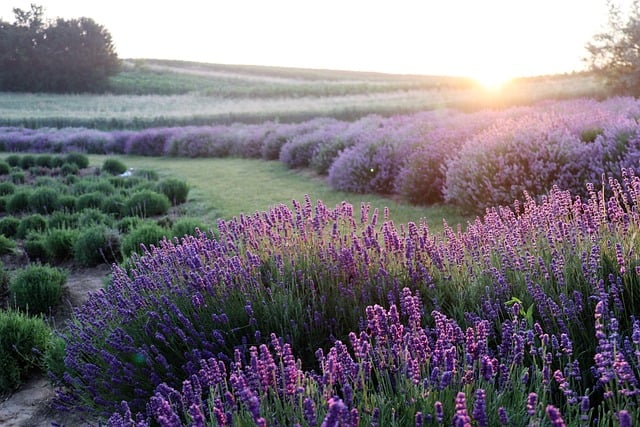
Lavender is a cherished herb known for its fragrance and beauty.
Planting Tips and Varieties: Plant in well-drained sandy soil with full sunlight, spacing plants at least 2 feet apart.
Care Considerations: Allow soil to dry between watering—you can reduce watering significantly once established. Prune back after blooming to maintain shape and enhance future growth. Avoid overhead watering to keep foliage dry, which helps prevent fungal diseases.
Cilantro (Coriandrum sativum)
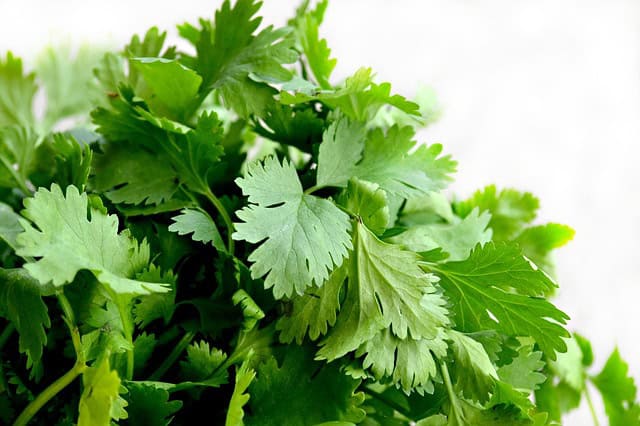
Cilantro is valued for its flavor in many cuisines yet prefers cooler temperatures.
Planting Tips and Varieties: Sow seeds directly in well-drained soil; aim for partial shade to avoid rapid bolting in summer heat.
Care Considerations: Water consistently to keep the soil moderately moist. Harvest leaves regularly to ensure continuing growth; avoid letting the plants bolt too quickly by providing shade during intense heat.
Desert Landscape Plants To Plant
Mesquite Tree (Prosopis spp.)
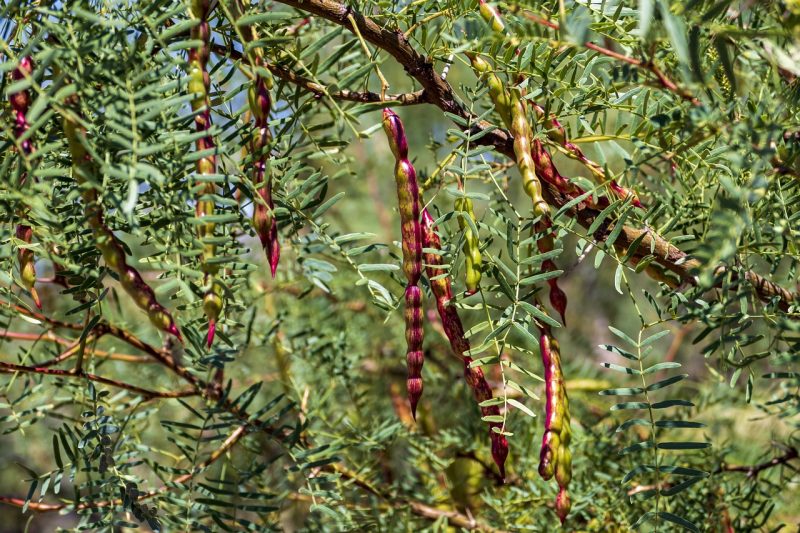
Mesquite trees are drought-tolerant and provide shade, enhancing gardens and landscapes.
Planting Tips and Varieties: Plant trees in well-draining soils as they flourish in full sun. Allow ample spacing between trees (15-20 feet apart) for growth.
Care Considerations: New trees should be watered regularly until established. Afterward, they adapt to drought and are low-maintenance. Pruning maintains shape and encourages health.
Palo Verde Tree (Parkinsonia spp.)
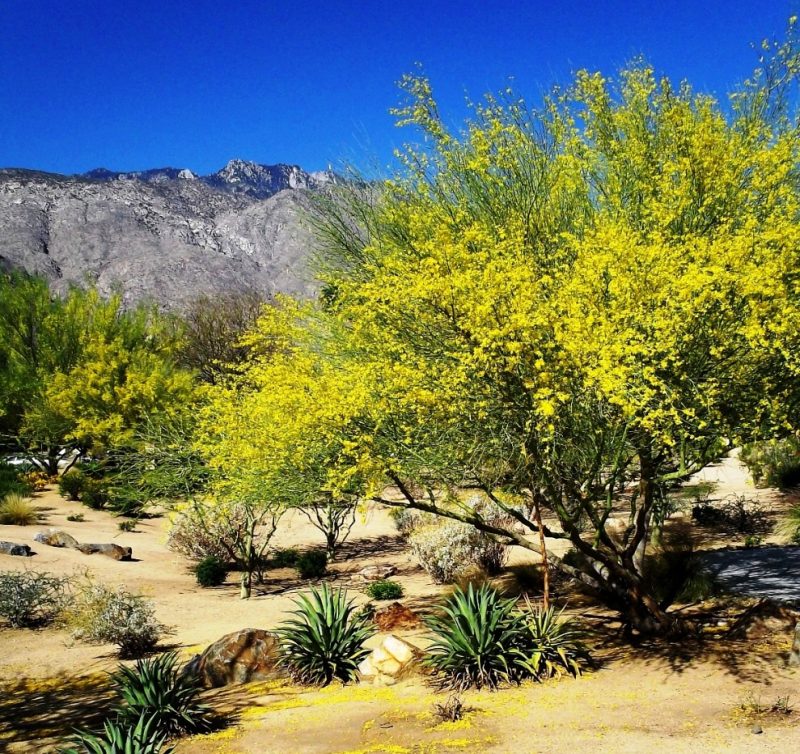
The Palo Verde tree is a distinctive tree that thrives in desert conditions with its beautiful blooms.
Planting Tips and Varieties: Plant in well-drained soil and full sun, spacing trees at least 15-20 feet apart.
Care Considerations: Watering is essential for young trees, but once established, they are quite drought-tolerant. Regular pruning can help shape the tree and remove unwanted growth, contributing to both health and aesthetics.
Desert Ironwood (Olneya tesota)
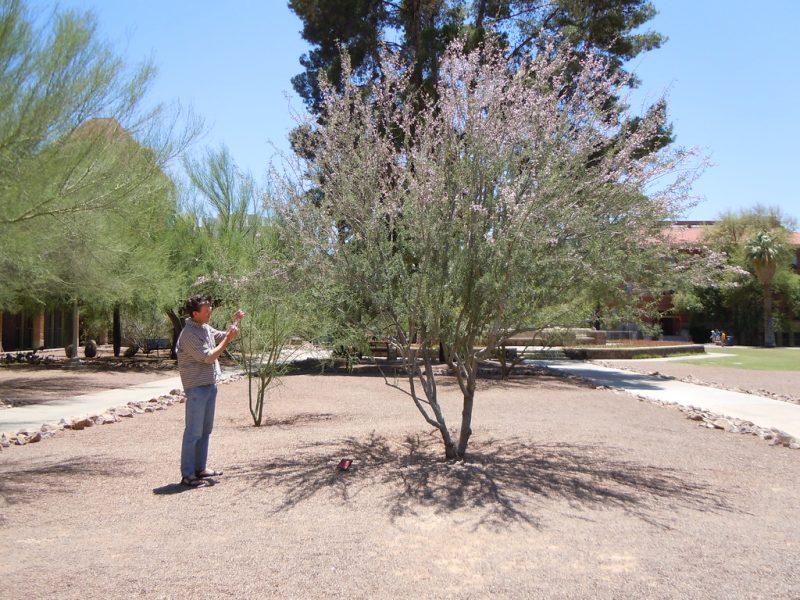
Desert ironwood is a slower-growing tree with beautiful foliage and durable wood.
Planting Tips and Varieties: Best planted in well-drained sandy soils with full sunlight. Space trees around 20 feet apart to accommodate their width.
Care Considerations: This hardy tree needs minimal water once established and thrives in nutrient-poor soils. Fertilizing can be done sparingly if desired. Pruning can be beneficial for structure, especially during formative years.
Teddybear Cholla (Cylindropuntia bigelovii)
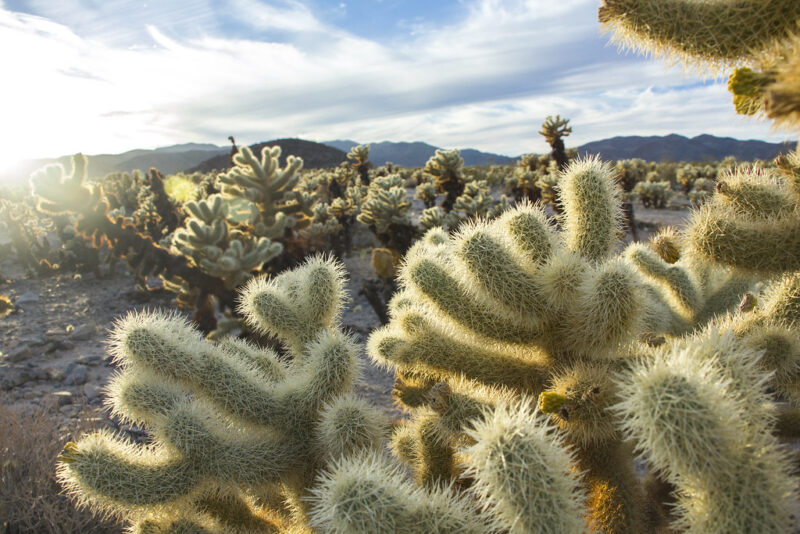
Known for its unique appearance, Teddybear cholla is a classic desert cactus.
Planting Tips and Varieties: Plant in sunny, well-drainage areas, creating space for their spiny growth habit.
Care Considerations: They require very little water, thriving on natural rainfall alone once established. Keep an eye on pests like scale insects, addressing them promptly without overly disturbing the plant.
Agave (Agave spp.)
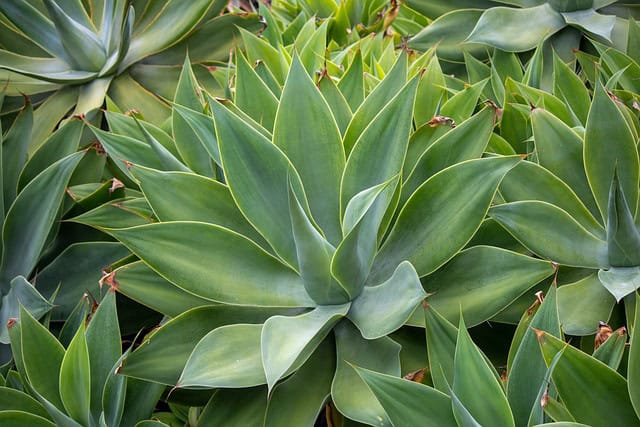
Agave plants are iconic for their architectural forms and aesthetics.
Planting Tips and Varieties: Plant in well-drained soils with ample sunlight, spacing them at least 3 feet apart.
Care Considerations: Agave needs minimal watering once established, thriving in arid conditions. Remove any dead leaves regularly to keep the plant healthy and visually appealing.
Red Yucca (Hesperaloe parviflora)

Red yucca is renowned for its vibrant flower spikes and low maintenance.
Planting Tips and Varieties: Plant in well-draining soil in sunny locations, spacing plants about 3 feet apart.
Care Considerations: Once established, red yucca is drought-tolerant. Regular watering during the establishment phase is essential. Cut back the foliage annually after flowering to maintain health and vigor.
Desert Lavender (Hyptis emoryi)
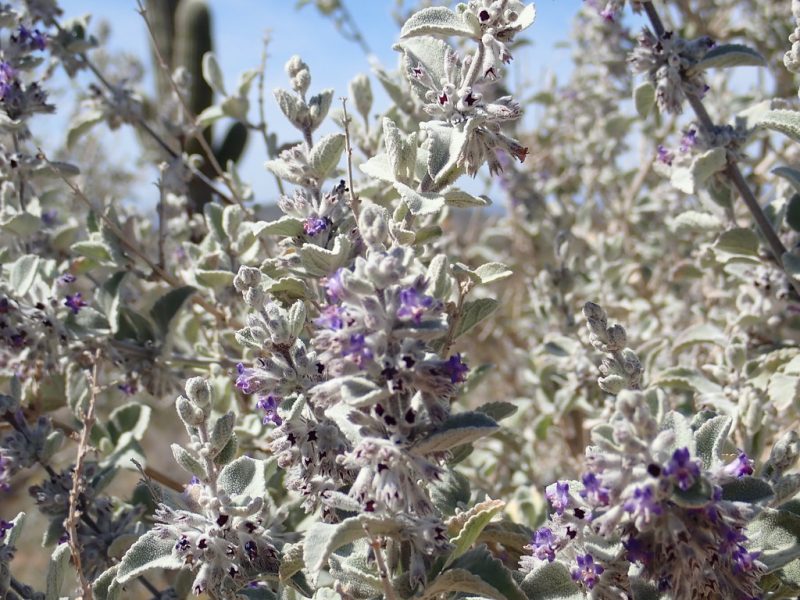
Desert lavender is a beautiful shrub with fragrant foliage and purple blooms.
Planting Tips and Varieties: Plant in sandy, well-drained soil and full sun, spacing plants at least 2 feet apart to encourage airflow.
Care Considerations: Once established, desert lavender requires little water. Regular trimming keeps plants bushy and healthy while promoting vibrant blooms. Deadheading spent flowers helps maintain blooming health.
Fairy Duster (Calliandra eriophylla)

Fairy duster boasts delicate flowers and is an excellent choice for attracting pollinators.
Planting Tips and Varieties: Plant in full sun with well-drained soil, spacing plants about 2-3 feet apart.
Care Considerations: This resilient foliage prefers minimal water once established. Regular trimming promotes bushiness, and pruning can enhance floral production.
Redroot (Frankenia grandifolia)
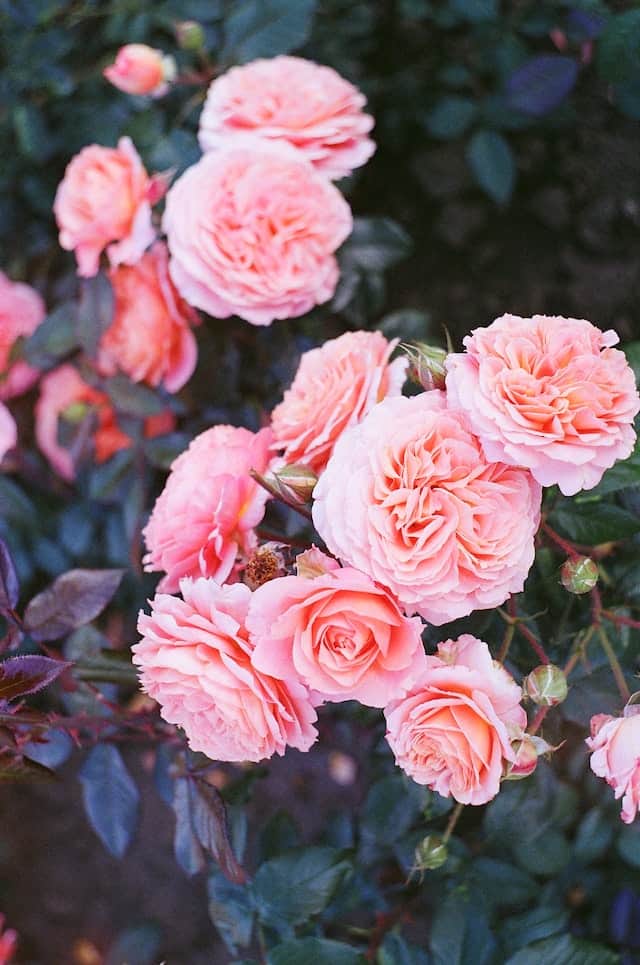
Redroot serves as an excellent ground cover in desert landscapes, offering stunning blooms.
Planting Tips and Varieties: Best planted in well-drained soils in full sun. Space plants about 1-2 feet apart to allow growth.
Care Considerations: Once established, it requires little watering. Regular monitoring helps alleviate any competition from invasive weeds.
Sotol (Dasylirion wheeleri)
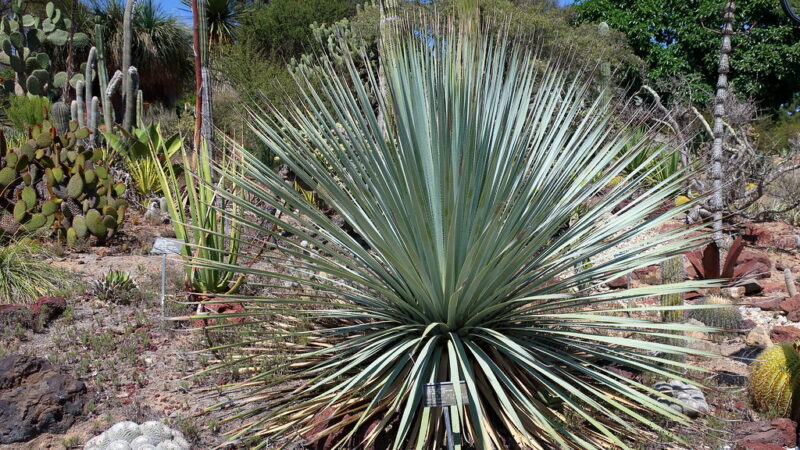
Sotol is known for its unique rosette appearance and tall spikes.
Planting Tips and Varieties: Plant in sandy, well-draining soils under full sun, spacing them about 3-5 feet apart for room to spread.
Care Considerations: Allow for minimal watering, as they thrive in arid conditions. This resilient plant is low-maintenance and can tolerate drought, requiring pruning only to remove any dead leaves.
FAQ
What are the best planting techniques for desert gardening in May?
Prioritize harvesting at planting times (morning or evening) to avoid heat stress. Ensure adequate spacing for airflow, and consider mulching for moisture retention and weed suppression, especially as temperatures climb.
How do I protect my young plants from desert heat?
Provide shade during the initial weeks to mitigate heat stress; lightweight covers can help protect seedlings. Monitor soil moisture diligently, especially during the hottest parts of the day.
What soil amendments should I consider before planting?
Integrate organic matter, such as compost or well-rotted manure, into sandy desert soils to improve moisture retention. Test soil pH for optimal plant health, adjusting as per individual plant needs.
Are there specific pests to watch out for in desert gardens?
Common pests include aphids, spider mites, and whiteflies. Implementing beneficial insect habitats, like butterfly gardens, can attract natural predators to keep troublesome pests in check.
Can I grow these plants in containers?
Yes! Most of the herbs, vegetables, and flowers listed can flourish in containers, suitable for defined garden spaces or patios. Choose appropriate pot sizes with drainage holes and monitor irrigation closely, as container plants can dry out more rapidly.
What other considerations should I take into account for desert gardening?
Monitor and adapt to local microclimates, plan for proper watering regimes, and select plants that naturally thrive in your specific zone for more robust gardens. Grouping plants by water needs can also create efficient watering strategies.


